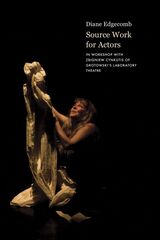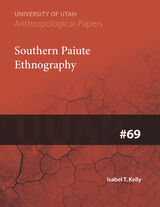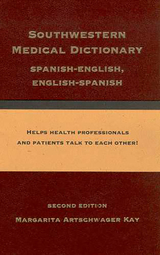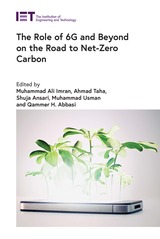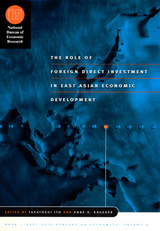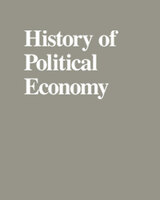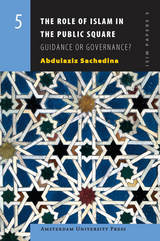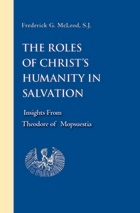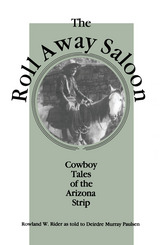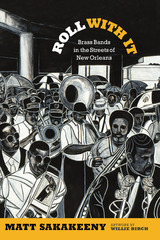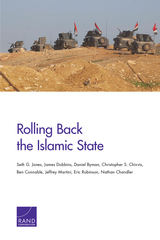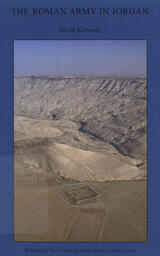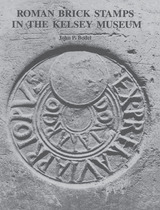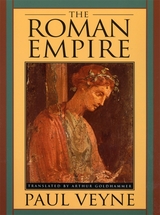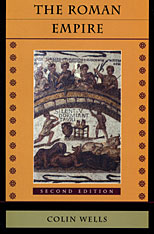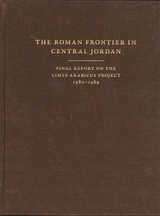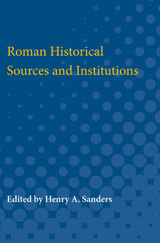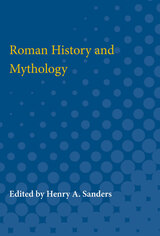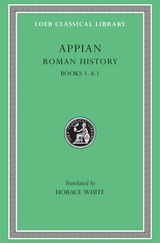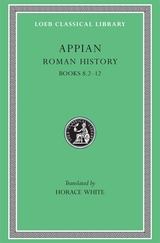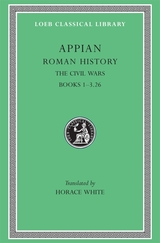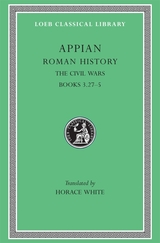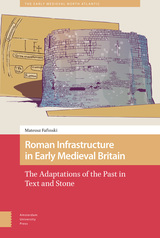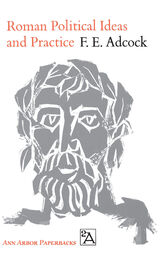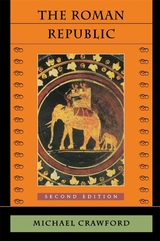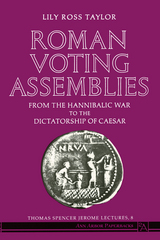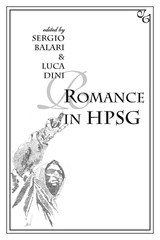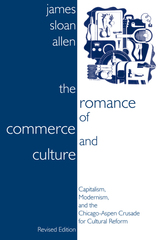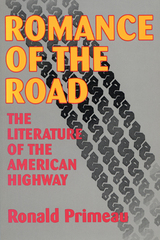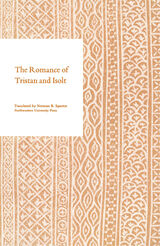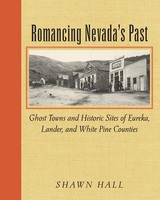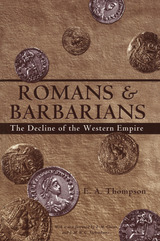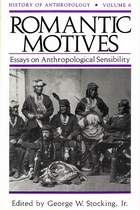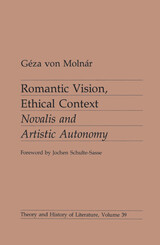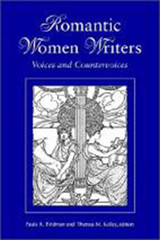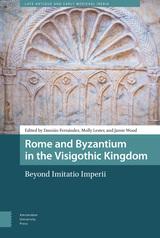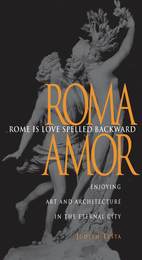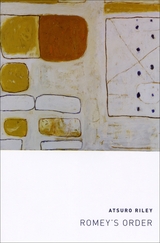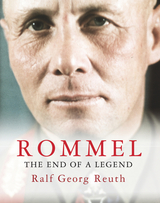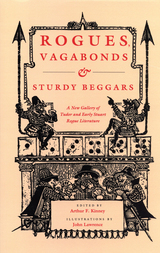 Rogues, Vagabonds, and Sturdy Beggars: A New Gallery of Tudor and Early Stuart Rogue Literature Exposing the Lives, Times, and Cozening Tricks of the Elizabethan Underworld
Arthur F. Kinney
University of Massachusetts Press, 1990 The Elizabethan age was one of unbounded vitality and exuberance; nowhere is the color and action of life more vividly revealed than in the rogue books and cony-catching (confidence game) pamphlets of the sixteenth century. This book presents seven of the age's liveliest works: Walker's Manifest Detection of Dice Play; Awdeley's Fraternity of Vagabonds; Harman's Caveat for Common Cursitors Vulgarly Called Vagabonds; Greene's Notable Discovery of Cozenage and Black Book's Messenger; Dekker's Lantern and Candle-light; and Rid's Art of Juggling. From these pages spring the denizens of the Elizabethan underworld: cutpurses, hookers, palliards, jarkmen, doxies, counterfeit cranks, bawdy-baskets, walking morts, and priggers of prancers.
In his introduction, Arthur F. Kinney discusses the significance of these works as protonovels and their influence on such writers as Shakespeare. He also explores the social, political, and economic conditions of a time that spawned a community of renegades who conned their way to fame, fortune, and, occasionally, the rope at Tyburn.
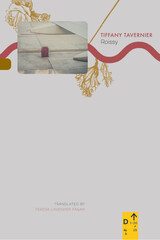 Roissy
Tiffany Tavernier
Seagull Books, 2021 Disguised as a passenger, a homeless woman lives in Paris’s Roissy airport until she meets a man who makes her confront her past.
Every day the narrator of this gripping novel hurries from one terminal to another in Charles de Gaulle Roissy airport, Paris, pulling her suitcase behind her, talking to people she meets—but she never boards an airplane. She becomes an “unnoticeable,” a homeless woman disguised as a passenger, protected by her anonymity. When a man who comes to the airport every day to await the Rio-to-Paris flight—the same route on which a plane crashed into the sea a few years earlier—attempts to approach her, she flees, terrified. But eventually, she accepts his kindness and understands his loss, and she gives in to the grief they share, forming a bond with him that becomes more than friendship. A magnificent portrait of a woman who rediscovers herself through a chance connection, Roissy is a powerful, polyphonic book, a glimpse at the infinite capacity of the human spirit to be reborn.
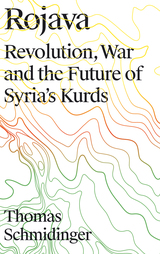 Rojava: Revolution, War and the Future of Syria's Kurds
Thomas Schmidinger
Pluto Press, 2018 The Kurdish territory of Rojava in Syria has in recent years become a watchword for radical democracy, communalism, and gender equality. This book, however, argues that much of how we see Rojava from the outside is a projection of the values of Western radicals whose understanding of the complexities of the situation are limited. Thomas Schmidinger has been working in Rojava for seventeen years, and here he gives us the clearest picture yet of the history, politics, and society of the region today. He sketches the historical background of the Kurds in Syria, then details the developments since the outbreak of war in 2011, including the establishment of the Kurdish para-state and ongoing conflicts between Kurdish parties about how it should be administered. Drawing on interviews with leaders from different parties, civil society activists, artists, fighters, and religious leaders, Schmidinger delivers an authentic, nuanced, unromanticized portrait of Rojava today.
The Role of 6G and Beyond on the Road to Net-Zero Carbon
Muhammad Ali Imran
The Institution of Engineering and Technology, 2023 In the race against climate change, the focus has turned towards achieving the 2050 net-zero carbon target. Achieving net-zero means balancing between the amount of greenhouse gas removed from the atmosphere and those produced and released. Efforts are needed on both sides to find suitable solutions to reduce released emissions and to remove current emissions from the atmosphere. A collective effort revolving around the utilisation of new technologies, particularly in wireless and mobile communications, is needed to achieve the net-zero carbon target.
 The Role of Complementary and Alternative Medicine: Accommodating Pluralism
Daniel Callahan, Editor
Georgetown University Press At the center of the debate over complementary and alternative medicine—from acupuncture and chiropractic treatments to homeopathy and nutritional supplements—is how to scientifically measure the effectiveness of a particular treatment. Fourteen scholars from the fields of medicine, philosophy, sociology, and cultural and folklore studies examine that debate, and the clash between growing public support and the often hostile stance of clinicians and medical researchers. Proponents and critics have different methodologies and standards of evidence—raising the question of how much pluralism is acceptable in a medical context—particularly in light of differing worldviews and the struggle to define medicine in the modern world. The contributors address both the methodological problems of assessment and the conflicting cultural perspectives at work in a patient's choice of treatment. Sympathetic to CAM, the contributors nonetheless offer careful critiques of its claims, and suggest a variety of ways it can be taken seriously, yet subject to careful scrutiny.
The Role of Foreign Direct Investment in East Asian Economic Development
Edited by Takatoshi Ito and Anne O. Krueger
University of Chicago Press, 2000 The international flow of long-term private capital has increased dramatically in the 1990s. In fact, many policymakers now consider private foreign capital to be an essential resource for the acceleration of economic growth. This volume focuses attention on the microeconomic determinants and effects of foreign direct investment (FDI) in the East Asian region, allowing researchers to explore the overall structure of FDI, to offer case studies of individual countries, and to consider their insights, both general and particular, within the context of current economic theory.
The Role of Government in the History of Economic Thought: 2005 Supplement, Volume 37
Steven G. Medema and Peter Boettke
Duke University Press The Role of Government in the History of Economic Thought examines a controversial area of economic analysis: the appropriate role of government within the economic system. If the first two-thirds of the twentieth century were dominated by the active involvement of economists in government policymaking, blurring the lines between the spheres of economics and politics, then the last several decades have witnessed something of a reversion to the classical economics of Adam Smith and John Stuart Mill. This volume offers a comprehensive and integrated history of the evolution of the relationship between governments and economies, examining the British classical tradition, the American progressive movement, and corporatist ideology.
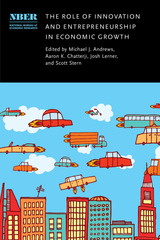 The Role of Innovation and Entrepreneurship in Economic Growth
Edited by Michael J. Andrews, Aaron Chatterji, Josh Lerner, and Scott Stern
University of Chicago Press, 2022 This volume presents studies from experts in twelve industries, providing insights into the future role of innovation and entrepreneurship in driving economic growth across sectors.
We live in an era in which innovation and entrepreneurship seem ubiquitous, particularly in regions like Silicon Valley, Boston, and the Research Triangle Park. But many metrics of economic growth, such as productivity growth and business dynamism, have been at best modest in recent years. The resolution of this apparent paradox is dramatic heterogeneity across sectors, with some industries seeing robust innovation and entrepreneurship and others seeing stagnation. By construction, the impact of innovation and entrepreneurship on overall economic performance is the cumulative impact of their effects on individual sectors. Understanding the potential for growth in the aggregate economy depends, therefore, on understanding the sector-by-sector potential for growth. This insight motivates the twelve studies of different sectors that are presented in this volume. Each study identifies specific productivity improvements enabled by innovation and entrepreneurship, for example as a result of new production technologies, increased competition, or new organizational forms. These twelve studies, along with three synthetic chapters, provide new insights on the sectoral patterns and concentration of the contributions of innovation and entrepreneurship to economic growth.
The Role of Islam in the Public Square: Guidance or Governance?
Abdulaziz Sachedina
Amsterdam University Press, 2006 The Role of Islam in the Public Square tackles the critical role of religion in the development of democratic institutions in Afghanistan and Iraq. Constitutional debates, Abdulaziz Sachedina asserts, have yet to address the role of religious convictions alongside their citizens’ basic freedoms and rights. Sachedina argues that the way in which religious values are defined in Afghanistan and Iraq remains a major stumbling block, and that an inclusive sense of citizenship—one that transcends doctrinal and theological uniformity—is needed if democracy is to succeed in both countries.
 The Role of Psychiatry in Medical Education: An Appraisal and a Forecast
Sidney L. Werkman
Harvard University Press This book describes and contrasts various psychiatric teaching programs in medical schools. After an examination of the differing and frequently unsatisfactory states of these programs, it also proposes a comprehensive plan for the future.
In preparing this study the author visited numerous medical schools, observing a wide range of teaching methods, goals, and facilities. His aim here is fourfold: to describe and compare existing medical school psychiatry programs in detail; to illustrate by example and anecdote the relation of teachers and students to these programs; to construct a synthesis of existing psychiatry programs that will offer optimum training and to outline a new program based on this synthesis and some additional proposals; and finally to show how methodology is a crucial but as yet unappreciated part of many psychiatry programs.
Dr. Werkman attempts to be a reporter in depth to his psychiatric colleagues about new and important developments in modern psychiatric teaching. The great scope and variety which the field of psychiatry has acquired since the Second World War has often meant that psychiatrists know little in detail of what their colleagues are doing. The author finds as well that there is often a lack of communication both within a single department and between departments in different medical schools, and that the attitude of many non-psychiatrists on the faculties ranges from ignorance to hostility--an attitude often reflected by the students.
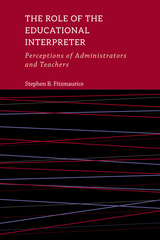 The Role of the Educational Interpreter: Perceptions of Administrators and Teachers
Stephen B. Fitzmaurice
Gallaudet University Press, 2021 While educational interpreting has been studied for decades, the research has historically focused on the tasks educational interpreters are engaged in during their work day. In The Role of the Educational Interpreter, Stephen B. Fitzmaurice takes a new approach using role theory to examine how administrators and teachers perceive the role and work of educational (K–12) interpreters.
Through a series of qualitative interviews and quantitative questionnaires with district administrators, school administrators, general education teachers, and teachers of the deaf, Fitzmaurice documents their perceptions of educational interpreters. Findings from the data reveal the perceptions of administrators and teachers set the stage for role ambiguity, role conflicts, and subsequent role overload for educational interpreters. Fitzmaurice elaborates on the implications of the research, and also provides concrete recommendations for researchers and practitioners, including an emphasis on the importance of involving the Deaf community in this work. This volume aims to offer clarity on the role of the educational interpreter, and dispel the confusion and conflicts created by divergent perspectives. A shared understanding of the role of the educational interpreter will allow administrators, teachers, and interpreters to work collaboratively to improve educational outcomes for deaf students.
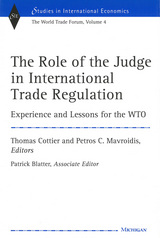 The Role of the Judge in International Trade Regulation: Experience and Lessons for the WTO
Thomas Cottier and Petros C. Mavroidis, Editors
University of Michigan Press, 2003 The WTO is generally seen as a key actor of globalization and, as such, has been the point of convergence of popular irritation worldwide. Many of the reproaches addressed to the WTO show civil societys concern with what is perceived as a democratic deficit in the way the organization operates. The main fear is to see trade rise as the ultimate value, prevailing over concerns such as health and environment. The Role of the Judge offers insight into how disputes are solved at the WTO level, into how the judicial branch interacts with the rest of the organization, and into the degree of sensitivity of the system to external input. The book sheds light on the judicial system governing the WTO and shows it to be the only truly multilateral system where disputes are solved by third-party adjudication.
The book develops along three lines: the first a search for cases submitted to the WTO where the judge exceeded its authority; the second a comparison of the WTO with the operations of national judicial systems having different levels of integration, specifically the United States (federal level) and the EC (quasi-federal level); and the third an exploration of directions for the future of dispute settlement in the WTO.
Reflecting the diversity of its contributors, this book addresses questions of economics, political science, and law, bringing an unusual level of multidisciplinarity to this topic and context. It is designed for both academic readers and practitioners, who will find it full of practical insights as well as rich and detailed analysis.
Thomas Cottier is Professor of European and International Economic Law, University of Bern, and Managing Director, World Trade Institute, University of Bern.
Petros C. Mavroidis is Professor of Law, University of Neuchâtel. He formerly worked in the Legal Affairs Division of the World Trade Organization.
Patrick Blatter is Mavroidiss scientific collaborator.
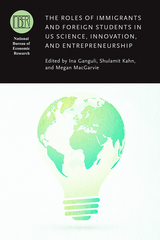 The Roles of Immigrants and Foreign Students in US Science, Innovation, and Entrepreneurship
Edited by Ina Ganguli, Shulamit Kahn, and Megan MacGarvie
University of Chicago Press, 2020 The number of immigrants in the US science, technology, engineering, and mathematics (STEM) workforce and among recipients of advanced STEM degrees at US universities has increased in recent decades. In light of the current public debate about immigration, there is a need for evidence on the economic impacts of immigrants on the STEM workforce and on innovation. Using new data and state-of-the-art empirical methods, this volume examines various aspects of the relationships between immigration, innovation, and entrepreneurship, including the effects of changes in the number of immigrants and their skill composition on the rate of innovation; the relationship between high-skilled immigration and entrepreneurship; and the differences between immigrant and native entrepreneurs. It presents new evidence on the postgraduation migration patterns of STEM doctoral recipients, in particular the likelihood these graduates will return to their home country. This volume also examines the role of the US higher education system and of US visa policy in attracting foreign students for graduate study and retaining them after graduation.
Roll Away Saloon
Rowland W. Rider as told to Deirdre M. Paulsen
Utah State University Press, 1985 With his animated tales of Zane Grey, Butch Cassidy, and the Robbers Roost gang, Rider creates an engaging and believable picture of the joys and hardships of cowboy life.
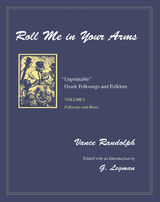 Roll Me in Your Arms: "Unprintable" Ozark Folksongs and Folklore, Volume I, Folksongs and Music
Vance Randolph
University of Arkansas Press, 1992 Collected in the field from 1915 through 1955, these tales and songs were considered by the publisher at the time to be too salacious for inclusion in Vance Randolph’s Ozark Folksongs. Randolph came to doubt that they would ever appear in print, and they did not in his lifetime. Roll Me in Your Arms, Volume I of “Unprintable” Ozark Folksongs and Folklore, includes 180 unexpurgated songs collected by Randolph with tunes transcribed from the original singers. Volume II, Blow the Candle Out, contains rhymes and songs without music as well as other unexpurgated Ozark folk materials, including children’s lore, elements in speech, graffiti, riddles, dance calls, and beliefs. G. Legman’s painstaking and patient editing, annotating, and crossreferencing richly complement the Randolph collection. The result is a look into a previously neglected area in the study of folksong and folklore in the Ozarks and further evidence of Randolph’s preeminence in the field. The late Vance Randolph lived in the Ozark Mountains from 1920 until his death in 1980. Although he taught folklore at the University of Arkansas in Fayetteville, he is best remembered for his many years of field research resulting in the national bestseller Pissing in the Snow & Other Ozark Folktales and more than a dozen other books on American folklore.
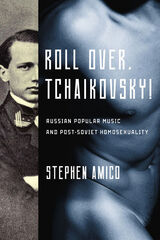 Roll Over, Tchaikovsky!: Russian Popular Music and Post-Soviet Homosexuality
Stephen Amico
University of Illinois Press, 2017 Centered on the musical experiences of homosexual men in St. Petersburg and Moscow, this ground-breaking study examines how post-Soviet popular music both informs and plays off of a corporeal understanding of Russian male homosexuality. Drawing upon ethnography, musical analysis, and phenomenological theory, Stephen Amico offers an expert technical analysis of Russian rock, pop, and estrada music, dovetailing into an illuminating discussion of homosexual men's physical and bodily perceptions of music. He also outlines how popular music performers use song lyrics, drag, physical movements, images of women, sexualized male bodies, and other tools and tropes to implicitly or explicitly express sexual orientation through performance. Finally, Amico uncovers how such performances help homosexual Russian men to create their own social spaces and selves, in meaningful relation to others with whom they share a "nontraditional orientation."
Roll With It: Brass Bands in the Streets of New Orleans
Matt Sakakeeny
Duke University Press, 2013 Roll With It is a firsthand account of the precarious lives of musicians in the Rebirth, Soul Rebels, and Hot 8 brass bands of New Orleans. These young men are celebrated as cultural icons for upholding the proud traditions of the jazz funeral and the second line parade, yet they remain subject to the perils of poverty, racial marginalization, and urban violence that characterize life for many black Americans. Some achieve a degree of social mobility while many more encounter aggressive policing, exploitative economies, and a political infrastructure that creates insecurities in healthcare, housing, education, and criminal justice. The gripping narrative moves with the band members from back street to backstage, before and after Hurricane Katrina, always in step with the tap of the snare drum, the thud of the bass drum, and the boom of the tuba.
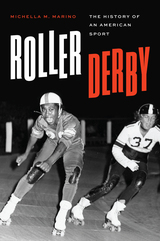 Roller Derby: The History of an American Sport
By Michella M. Marino
University of Texas Press, 2021 Since 1935, roller derby has thrilled fans and skaters with its constant action, hard hits, and edgy attitude. However, though its participants’ athleticism is undeniable, roller derby has never been accepted as a “real” sport. Michella M. Marino, herself a former skater, tackles the history of a sport that has long been a cultural mainstay for one reason both utterly simple and infinitely complex: roller derby has always been coed. Richly illustrated and drawing on oral histories, archival materials, media coverage, and personal experiences, Roller Derby is the first comprehensive history of this cultural phenomenon, one enjoyed by millions yet spurned by mainstream gatekeepers. Amid the social constraints of the mid-twentieth century, roller derby’s emphasis on gender equality attracted male and female athletes alike, producing gender relations and gender politics unlike those of traditional sex-segregated sports. In an enlightening feminist critique, Marino considers how the promotion of pregnancy and motherhood by roller derby management has simultaneously challenged and conformed to social norms. Finally, Marino assesses the sport’s present and future after its resurgence in the 2000s.
Rolling Back the Islamic State
Seth G. Jones
RAND Corporation, 2017 The Islamic State has lost substantial amounts of territory but continues to conduct and inspire attacks around the world. This report assesses the threat the Islamic State poses to the United States and examines strategies to counter the group and prevent a resurgence of the Islamic State or other Salafi-jihadist groups.
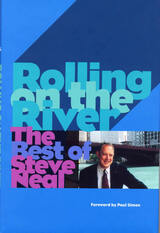 Rolling on the River: The Best of Steve Neal
Steve Neal. Foreword by Paul Simon
Southern Illinois University Press, 1999
"There are few places where the game [of politics] is played with more intensity than in Chicago," notes Steve Neal, who has covered that city's politics since 1979.
The longtime political columnist for the Chicago Sun-Times, Neal covered Jane M. Byrne's election in 1979 as the city's first woman mayor and Harold Washington's 1983 triumph as Chicago's first African American mayor. Even people who are not interested in politics are drawn to Neal's column because of his hard-hitting style and lucid insights. Rolling on the River is the first published collection of his work.
In these pages, you'll meet the state legislator who never met a special interest he did not like, an alderman groveling to a mob boss, and the prosecutor who gained notoriety as a publicity hound. Of a junketing congressman, Neal writes: "Instead of sending out a congressional newsletter, [he] ought to be sending his constituents 'Wish you were here' postcards of sandy beaches."
Neal's beat is politics, but his interests are rich and varied. He also writes about sports, music, literature, and film with a point of view that is fresh and original. Neal shows how Muhammad Ali became the heavyweight champion who transcended sports and how Sid Luckman changed football. He writes of Kenny Washington's importance in breaking professional football's color barrier and Steve Prefontaine's courage in taking on the little gray men of the sports establishment. Neal chronicles Paul Robeson's struggles: "His name became a great whisper. . . . The injustices against Paul Robeson have not been righted."
Nobel laureate Saul Bellow tells Neal that comedy is the bright hope of American fiction because it is too difficult for writers in this country to grasp the worst of the human condition. Neal tells why Frank Sinatra called Chicago his kind of town and also shows how the city inspires the poetry of Gwendolyn Brooks.
Neal, a former White House correspondent, shares his perspective as one of the few reporters to have interviewed Ronald Reagan in four different decades. He recalls spending an evening with Richard M. Nixon, defends Harry Truman's most controversial decision, and writes from Ireland of John F. Kennedy's enduring legacy in the nation of his ancestors. Neal portrays William Jefferson Clinton as the "world's oldest teenager."
With vivid imagery, Neal makes his subjects come alive. Mayor Richard M. Daley is likened to Forrest Gump, and the legendary boxing announcer Ben Bentley is hailed as the last of the Damon Runyon characters.
Tough but fair. Illuminating. Compassionate. That's the best of Steve Neal.
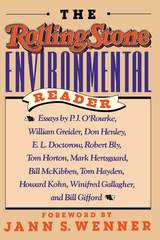 The Rolling Stone Environmental Reader
John Lagana, Sid Holt and Howard Cohn
Island Press, 1992 As world population grows, and more people move to cities and suburbs, they place greater stress on the operating system of our whole planet. But urbanization and increasing densities also present our best opportunity for improving sustainability, by transforming urban development into desirable, lower-carbon, compact and walkable communities and business centers.
Jonathan Barnett and Larry Beasley seek to demonstrate that a sustainable built and natural environment can be achieved through ecodesign, which integrates the practice of planning and urban design with environmental conservation, through normal business practices and the kinds of capital programs and regulations already in use in most communities. Ecodesign helps adapt the design of our built environment to both a changing climate and a rapidly growing world, creating more desirable places in the process.
In six comprehensively illustrated chapters, the authors explain ecodesign concepts, including the importance of preserving and restoring natural systems while also adapting to climate-change; minimizing congestion on highways and at airports by making development more compact, and by making it easier to walk, cycle and take trains and mass transit; crafting and managing regulations to insure better placemaking and fulfill consumer preferences, while incentivizing preferred practices; creating an inviting and environmentally responsible public realm from parks to streets to forgotten spaces; and finally how to implement these ecodesign concepts.
Throughout the book, the ecodesign framework is demonstrated by innovative practices that are already underway or have been accomplished in many cities and suburbs—from Hammarby Sjöstad in Stockholm to False Creek North in Vancouver to Battery Park City in Manhattan, as well as many smaller-scale examples that can be adopted in any community.
Ecodesign thinking is relevant to anyone who has a part in shaping or influencing the future of cities and suburbs – designers, public officials, and politicians.
 Rolling Transition and the Role of Intellectuals: The Case of Hungary
András Bozóki
Central European University Press, 2022 Utilizing a new and original framework for examining the role of intellectuals in countries transitioning to democracy, Bozóki analyses the rise and fall of dissident intellectuals in Hungary in the late 20th century. He shows how that framework is applicable to other countries too as he forensically examines their activities. Bozóki argues that the Hungarian intellectuals did not become a ‘New Class’. By rolling transition, he means an incremental, non-violent, elite driven political transformation which is based on the rotation of agency, and it results in a new regime. This is led mainly by different groups of intellectuals who do not construct a vanguard movement but create an open network which might transform itself into different political parties. Their roles changed from dissidents to reformers, to movement organizers and negotiators through the periods of dissidence, open network building, roundtable negotiations, parliamentary activities, and new movement politics. Through the prism of political sociology, the author focuses on the following questions: Who were the dissident intellectuals and what did they want? Under what conditions do intellectuals rebel and what are the patterns of their protest? This book will be of interest to students, researchers, and public intellectuals around the world aiming to promote human rights and democracy.
The Roma - A Minority in Europe: Historical, Political and Social Perspectives
Yehuda Bauer
Central European University Press, 2007 The main issues arising from the encounter between Roma people and surrounding European society since the time of their arrival in Medieval Europe until today are discussed in this work. The history of their persecution and genocide during the Nazi era, in particular, is central to the present volume. Significantly, some authors sought to emphasize the continuing history of prejudice and persecution, which reached a peak during the Nazi era and persisted after the war. Current questions of social integration in Europe, as well as that of ethnic definition and the construction of ethnic-national identity constitute another principal pillar of the book. The complexity of issues involved, such as collective memory, myth-making and social constructionism, trigger intense debate among researchers dealing with Romani studies.
 The Roma as Agents of the “G*psy Question”: Belonging, Mobility, and Resettlement Policy in Socialist Czechoslovakia in the 1960s
Jan Ort
Karolinum Press, 2024 Reexamines mid-60’s state policies toward Czechoslovak Roma from the overlooked perspective of the Roma people themselves.
The story of Romani people in communist Czechoslovakia has long been framed by a discriminatory policy of assimilation, and thus by fatal interventions into Romani family ties and their broader socio-cultural systems. Paradoxically, such a narrative failed to integrate the perspective of the Roma themselves, who often associated the same period with an unprecedented experience of social inclusion and material security. In this book, Jan Ort examines the state policy that in the mid-1960s aimed at the definitive elimination of "G*psy backwardness" through the placement of thousands of Roma families in non-Roma society, thus becoming a symbol of the social engineering interventions of the Communist regime in the lives of Czechoslovak Roma. In contrast to the predominant focus on the perspective of state authorities, Ort seeks to map the practice of this policy in specific places with an emphasis on the experiences and agency of the Roma themselves, especially those who had their homes in eastern Slovakia. In the empirical richness of a micro-historical approach, Roma as Agents of the “G*psy Question” uncovers the diverse stories of ordinary Roma who were able to incorporate various aspects of state policy into their own lives without necessarily giving up their distinctive cultural identity.
 The Roma in Romanian History
Viorel Achim
Central European University Press, 2004 One of the greatest challenges during the enlargement process of the European Union towards the east is how the issue of the Roma or Gypsies is tackled. This ethnic minority group represents a much higher share by numbers, too, in some regions going above 20% of the population. This enormous social and political problem cannot be solved without proper historical studies like this book, the most comprehensive history of Gypsies in Romania. It is based on academic research, synthesizing the entire historical Romanian and foreign literature concerning this topic, and using lot of information from the archives. The main focus is laid on the events of the greatest consequence. Special attention is devoted to aspects linked to the long history of the Gypsies, such as slavery, the process of integration and assimilation into the majority population, as well as the marginalization of Gypsies, which has historic roots. The process of emancipation of Gypsies in the mid-19th century receives due treatment. The deportation of Gypsies to Transnistria during the Antonescu regime, between 1942-1944, is reconstructed in a special chapter. The closing chapters elaborate on the policy toward Gypsies in the decades after the Second World War that explain for the latest developments and for the situation of this population in today's Romania.
 Roma-Gypsy Presence in the Polish-Lithuanian Commonwealth: 15th – 18th centuries
Lech Mróz
Central European University Press, 2017 This is an analysis of 166 original and previously unpublished documents dating from the very first mention of a Gypsy in 1401 up to the year 1 765. These documents range from royal decrees thru lawsuits to entries in municipal records. Some were written in Polish but many are in Latin, German or Ruthenian. They tell the story of not only the Gypsies living in Poland, but also of those who now live in Belarus, Lithuania, Latvia and Ukraine. Though Poland has not traditionally had a large Roma population, the author leads the reader through an eventful history of a people living on the margins of contemporary Europe. The historic documents illustrate a marked contrast to present stereotypes and popular media images and shows how the position of Roma/Gypsies shifted gradually from respected, wealthy and partly settled citizens of the early modern times, towards criminalized vagrants of the 18 th century. This is a careful interpretation and re-interpretation of documents pertaining to the Roma's past that will provide an enlightening historical perspective towards the re-evaluation and self-definition of the Romani people in contemporary Europe.
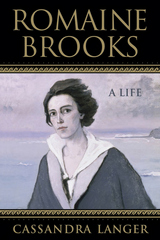 Romaine Brooks: A Life
Cassandra Langer
University of Wisconsin Press, 2015 The artistic achievements of Romaine Brooks (1874–1970), both as a major expatriate American painter and as a formative innovator in the decorative arts, have long been overshadowed by her fifty-year relationship with writer Natalie Barney and a reputation as a fiercely independent, aloof heiress who associated with fascists in the 1930s. In Romaine Brooks: A Life, art historian Cassandra Langer provides a richer, deeper portrait of Brooks's aesthetics and experimentation as an artist—and of her entire life, from her chaotic, traumatic childhood to the enigmatic decades after World War II, when she produced very little art. This provocative, lively biography takes aim at many myths about Brooks and her friends, lovers, and the subjects of her portraits, revealing a woman of wit and passion who overcame enormous personal and societal challenges to become an extraordinary artist and create a life on her own terms.
Romaine Brooks: A Life introduces much fresh information from Langer's decades of research on Brooks and establishes this groundbreaking artist's centrality to feminism and contemporary sexual politics as well as to visual culture.
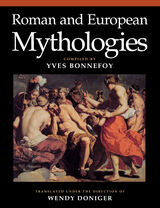 Roman and European Mythologies
Edited by Yves Bonnefoy
University of Chicago Press, 1992 This volume begins with Roman myths and traces their influence in
early Christian and later European literature. Ninety-five entries
by leading scholars cover subjects such as sacrificial cults and rites
in pre-Roman Italy, Roman religion and its origins, the mythologies of
paganism, the survival of the ancient gods in the Middle Ages and the
Renaissance, gypsy myths and rituals, romanticism and myth in Blake,
Nerval, and Balzac, and myth in twentieth-century English literature.
Mythologies offers illuminating examples of the workings of
myth in the structure of societies past and present—how we create,
use, and are guided by systems of myth to answer fundamental questions
about ourselves and our world.
Many of the sections in Mythologies, originally published as a
two-volume cloth set, will soon be available in four paperback volumes
(two are announced here; two more are scheduled for 1993). These
volumes will reproduce the articles, introductory essays, and
illustrations as they appeared in the full Mythologies set.
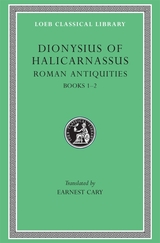 Roman Antiquities, Volume I: Books 1–2
Dionysius of Halicarnassus
Harvard University Press Roman history for a Greek audience.
Dionysius of Halicarnassus was born before 53 BC and went to Italy before 29 BC. He taught rhetoric in Rome while studying the Latin language, collecting material for a history of Rome, and writing. His Roman Antiquities began to appear in 7 BC.
Dionysius states that his objects in writing history were to please lovers of noble deeds and to repay the benefits he had enjoyed in Rome. But he wrote also to reconcile Greeks to Roman rule. Of the twenty books of Roman Antiquities (from the earliest times to 264 BC) we have the first nine complete; most of Books 10 and 11; and later extracts and an epitome of the whole. Dionysius studied the best available literary sources (mainly annalistic and other historians) and possibly some public documents. His work and that of Livy are our only continuous and detailed independent narratives of early Roman history.
Dionysius was author also of essays on literature covering rhetoric, Greek oratory, Thucydides, and how to imitate the best models in literature.
The Loeb Classical Library publishes a two-volume edition of the critical essays; the edition of Roman Antiquities is in seven volumes.
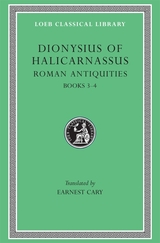 Roman Antiquities, Volume II: Books 3–4
Dionysius of Halicarnassus
Harvard University Press Roman history for a Greek audience.
Dionysius of Halicarnassus was born before 53 BC and went to Italy before 29 BC. He taught rhetoric in Rome while studying the Latin language, collecting material for a history of Rome, and writing. His Roman Antiquities began to appear in 7 BC.
Dionysius states that his objects in writing history were to please lovers of noble deeds and to repay the benefits he had enjoyed in Rome. But he wrote also to reconcile Greeks to Roman rule. Of the twenty books of Roman Antiquities (from the earliest times to 264 BC) we have the first nine complete; most of Books 10 and 11; and later extracts and an epitome of the whole. Dionysius studied the best available literary sources (mainly annalistic and other historians) and possibly some public documents. His work and that of Livy are our only continuous and detailed independent narratives of early Roman history.
Dionysius was author also of essays on literature covering rhetoric, Greek oratory, Thucydides, and how to imitate the best models in literature.
The Loeb Classical Library publishes a two-volume edition of the critical essays; the edition of Roman Antiquities is in seven volumes.
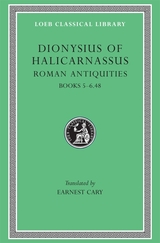 Roman Antiquities, Volume III: Books 5–6.48
Dionysius of Halicarnassus
Harvard University Press Roman history for a Greek audience.
Dionysius of Halicarnassus was born before 53 BC and went to Italy before 29 BC. He taught rhetoric in Rome while studying the Latin language, collecting material for a history of Rome, and writing. His Roman Antiquities began to appear in 7 BC.
Dionysius states that his objects in writing history were to please lovers of noble deeds and to repay the benefits he had enjoyed in Rome. But he wrote also to reconcile Greeks to Roman rule. Of the twenty books of Roman Antiquities (from the earliest times to 264 BC) we have the first nine complete; most of Books 10 and 11; and later extracts and an epitome of the whole. Dionysius studied the best available literary sources (mainly annalistic and other historians) and possibly some public documents. His work and that of Livy are our only continuous and detailed independent narratives of early Roman history.
Dionysius was author also of essays on literature covering rhetoric, Greek oratory, Thucydides, and how to imitate the best models in literature.
The Loeb Classical Library publishes a two-volume edition of the critical essays; the edition of Roman Antiquities is in seven volumes.
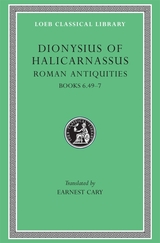 Roman Antiquities, Volume IV: Books 6.49–7
Dionysius of Halicarnassus
Harvard University Press Roman history for a Greek audience.
Dionysius of Halicarnassus was born before 53 BC and went to Italy before 29 BC. He taught rhetoric in Rome while studying the Latin language, collecting material for a history of Rome, and writing. His Roman Antiquities began to appear in 7 BC.
Dionysius states that his objects in writing history were to please lovers of noble deeds and to repay the benefits he had enjoyed in Rome. But he wrote also to reconcile Greeks to Roman rule. Of the twenty books of Roman Antiquities (from the earliest times to 264 BC) we have the first nine complete; most of Books 10 and 11; and later extracts and an epitome of the whole. Dionysius studied the best available literary sources (mainly annalistic and other historians) and possibly some public documents. His work and that of Livy are our only continuous and detailed independent narratives of early Roman history.
Dionysius was author also of essays on literature covering rhetoric, Greek oratory, Thucydides, and how to imitate the best models in literature.
The Loeb Classical Library publishes a two-volume edition of the critical essays; the edition of Roman Antiquities is in seven volumes.
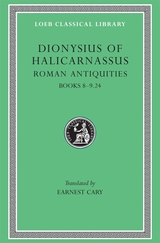 Roman Antiquities, Volume V: Books 8–9.24
Dionysius of Halicarnassus
Harvard University Press Roman history for a Greek audience.
Dionysius of Halicarnassus was born before 53 BC and went to Italy before 29 BC. He taught rhetoric in Rome while studying the Latin language, collecting material for a history of Rome, and writing. His Roman Antiquities began to appear in 7 BC.
Dionysius states that his objects in writing history were to please lovers of noble deeds and to repay the benefits he had enjoyed in Rome. But he wrote also to reconcile Greeks to Roman rule. Of the twenty books of Roman Antiquities (from the earliest times to 264 BC) we have the first nine complete; most of Books 10 and 11; and later extracts and an epitome of the whole. Dionysius studied the best available literary sources (mainly annalistic and other historians) and possibly some public documents. His work and that of Livy are our only continuous and detailed independent narratives of early Roman history.
Dionysius was author also of essays on literature covering rhetoric, Greek oratory, Thucydides, and how to imitate the best models in literature.
The Loeb Classical Library publishes a two-volume edition of the critical essays; the edition of Roman Antiquities is in seven volumes.
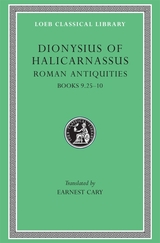 Roman Antiquities, Volume VI: Books 9.25–10
Dionysius of Halicarnassus
Harvard University Press Roman history for a Greek audience.
Dionysius of Halicarnassus was born before 53 BC and went to Italy before 29 BC. He taught rhetoric in Rome while studying the Latin language, collecting material for a history of Rome, and writing. His Roman Antiquities began to appear in 7 BC.
Dionysius states that his objects in writing history were to please lovers of noble deeds and to repay the benefits he had enjoyed in Rome. But he wrote also to reconcile Greeks to Roman rule. Of the twenty books of Roman Antiquities (from the earliest times to 264 BC) we have the first nine complete; most of Books 10 and 11; and later extracts and an epitome of the whole. Dionysius studied the best available literary sources (mainly annalistic and other historians) and possibly some public documents. His work and that of Livy are our only continuous and detailed independent narratives of early Roman history.
Dionysius was author also of essays on literature covering rhetoric, Greek oratory, Thucydides, and how to imitate the best models in literature.
The Loeb Classical Library publishes a two-volume edition of the critical essays; the edition of Roman Antiquities is in seven volumes.
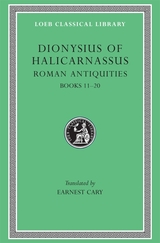 Roman Antiquities, Volume VII: Books 11–20
Dionysius of Halicarnassus
Harvard University Press Roman history for a Greek audience.
Dionysius of Halicarnassus was born before 53 BC and went to Italy before 29 BC. He taught rhetoric in Rome while studying the Latin language, collecting material for a history of Rome, and writing. His Roman Antiquities began to appear in 7 BC.
Dionysius states that his objects in writing history were to please lovers of noble deeds and to repay the benefits he had enjoyed in Rome. But he wrote also to reconcile Greeks to Roman rule. Of the twenty books of Roman Antiquities (from the earliest times to 264 BC) we have the first nine complete; most of Books 10 and 11; and later extracts and an epitome of the whole. Dionysius studied the best available literary sources (mainly annalistic and other historians) and possibly some public documents. His work and that of Livy are our only continuous and detailed independent narratives of early Roman history.
Dionysius was author also of essays on literature covering rhetoric, Greek oratory, Thucydides, and how to imitate the best models in literature.
The Loeb Classical Library publishes a two-volume edition of the critical essays; the edition of Roman Antiquities is in seven volumes.
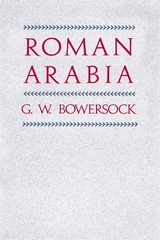 Roman Arabia
G. W. Bowersock
Harvard University Press, 1983 The Roman province of Arabia occupied a crucial corner of the Mediterranean world, encompassing most of what is now Jordan, southern Syria, northwest Saudi Arabia, and the Negev. Mr. Bowersock's book is the first authoritative history of the region from the fourth century B.C. to the age of Constantine.The book opens with the arrival of the Nahataean Arabs in their magnificent capital at Petra and describes the growth of their hellenized culture based on trade in perfume and spices. It traces the transformation of the region from an Arab kingdom under Roman influence into an imperial province, one that played an increasingly important role in the Roman strategy for control of the Near East. While the primary emphasis is on the relations of the Arabs of the region with the Romans, their interactions with neighboring states, Jewish, Egyptian, and Syrian, are also stressed. The narrative concludes with the breakup of the Roman province at the start of the Byzantine age.
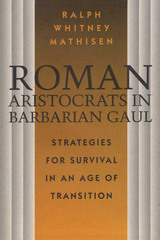 Roman Aristocrats in Barbarian Gaul: Strategies for Survival in an Age of Transition
By Ralph W. Mathisen
University of Texas Press, 1992 Skin-clad barbarians ransacking Rome remains a popular image of the "decline and fall" of the Roman Empire, but why, when, and how the Empire actually fell are still matters of debate among students of classical history. In this pioneering study, Ralph W. Mathisen examines the "fall" in one part of the western Empire, Gaul, to better understand the shift from Roman to Germanic power that occurred in the region during the fifth century AD. Mathisen uncovers two apparently contradictory trends. First, he finds that barbarian settlement did provoke significant changes in Gaul, including the disappearance of most secular offices under the Roman imperial administration, the appropriation of land and social influence by the barbarians, and a rise in the overall level of violence. Yet he also shows that the Roman aristocrats proved remarkably adept at retaining their rank and status. How did the aristocracy hold on? Mathisen rejects traditional explanations and demonstrates that rather than simply opposing the barbarians, or passively accepting them, the Roman aristocrats directly responded to them in various ways. Some left Gaul. Others tried to ignore the changes wrought by the newcomers. Still others directly collaborated with the barbarians, looking to them as patrons and holding office in barbarian governments. Most significantly, however, many were willing to change the criteria that determined membership in the aristocracy. Two new characteristics of the Roman aristocracy in fifth-century Gaul were careers in the church and greater emphasis on classical literary culture. These findings shed new light on an age in transition. Mathisen's theory that barbarian integration into Roman society was a collaborative process rather than a conquest is sure to provoke much thought and debate. All historians who study the process of power transfer from native to alien elites will want to consult this work.
The Roman Army in Jordan
David Kennedy
Council for British Research in the Levant, 2004 This is an updated and revised second edition of a handbook originally prepared for the XVIIIth International Congress of Roman Frontier Studies in Amman, Jordan in 2000 - a reflection of the growing importance of Roman studies in Jordan in recent years. In Part A, there are chapters on geography and environment, the Romans in Jordan and the Roman army there. In Part B there are 15 chapters surveying, region by region, the evidence for forts, towers, roads, literary texts, inscriptions and excavation around the entire country, ending with a chapter on the immediately adjacent parts of Roman Arabia that now lie in Syria, Saudi Arabia, Egypt and Israel. The book is profusely illustrated throughout and has many aerial views including 20 full-page photographs in colour.
Roman Art
Susan Walker
Harvard University Press, 1991 The grand monuments scattered across Europe, the Near East and northern Africa are impressive reminders of the art of the Roman Empire, but they only tell part of the story. The artistic legacy of the Romans also survives in many other forms, and in this book Susan Walker focuses on four main themes--the heritage of Greece, portraiture, public art, and furnishing and decorating homes. From the early Republic through to the later Empire the taste for Greek culture was an important influence on the Romans, but one which they adapted to create an art uniquely theirs. Drawing on the magnificent collections of the British Museum, Dr Walker discusses a wide range of Roman antiquities, from monumental sculpture for public places, portraits of emperors and private citizens, to mosaics, wall-paintings and tableware for enjoyment in more intimate surroundings.
 Roman Art in the Private Sphere: New Perspectives on the Architecture and Decor of the Domus, Villa, and Insula
Elaine K. Gazda, Editor
University of Michigan Press, 1991
"This is a stimulating book and should be compulsory reading for all students of Roman art."
---Classical Review
"For all the authors, attention to the ensemble, a sense of the relation between the formal and the iconographic, and the desire to historicize their material contribute to making this anthology unusual in its rigorous and creative attention to the way that art and architecture participate in the construction of the image of the Roman elite."
---Art Bulletin
Roman Art in the Private Sphere presents an impressive case for the social and art historical importance of the paintings, mosaics, and sculptures that filled the private houses of the Roman elite. The six essays in this volume range from the first century B.C.E. to the fourth century C.E., and from the Italian peninsula to the Eastern Empire and North African provinces.
The essays treat works of art that belonged to every major Roman housing type: the single-family atrium houses and the insula apartment blocks in Italian cities, the dramatically sited villas of the Campanian coast and countryside, and the palatial mansions of late antique provincial aristocrats.
In a complementary fashion the essays consider domestic art in relation to questions of decorum, status, wealth, social privilege, and obligation. Patrons emerge as actively interested in the character of their surroundings; artists appear as responsive to the desire of their patrons. The evidence in private art of homosexual conduct in high society is also set forth.
Originality of subject matter, sophisticated appreciation of stylistic and compositional nuance, and philosophical perceptions of the relationship of humanity and nature are among the themes that the essays explore. Together they demonstrate that Roman domestic art must be viewed on its own terms.
Elaine K. Gazda is Professor of the History of Art and Curator of Hellenistic and Roman Antiquities at the Kelsey Museum of Archaeology, University of Michigan.
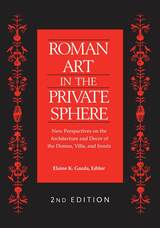 Roman Art in the Private Sphere: New Perspectives on the Architecture and Decor of the Domus, Villa, and Insula
Elaine K. Gazda, Editor
University of Michigan Press, 2010 "This is a stimulating book and should be compulsory reading for all students of Roman art."
---Classical Review "[A] model exploration into the ways private décor can be used to facilitate a larger understanding of Roman art and society."
---Classical World Roman Art in the Private Sphere presents an impressive case for the social and art historical importance of the paintings, mosaics, and sculptures that filled the private houses of the Roman elite. The six essays in this volume range from the first century BCE to the fourth century CE, and from the Italian peninsula to the Eastern Empire and North African provinces, treating works of art that belonged to every major Roman housing type: the single-family atrium houses and the insula apartment blocks in Italian cities, the dramatically sited villas of the Campanian coast and countryside, and the palatial mansions of late antique provincial aristocrats. This new edition includes a fresh contribution by editor Elaine Gazda, tracing the developments in the treatment of private Roman art since the publication of the original edition of Roman Art in the Private Sphere. Elaine K. Gazda is Professor of the History of Art and Curator of Hellenistic and Roman Antiquities at the Kelsey Museum of Archaeology, University of Michigan.
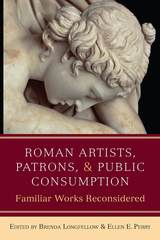 Roman Artists, Patrons, and Public Consumption: Familiar Works Reconsidered
Brenda Longfellow and Ellen E. Perry, editors
University of Michigan Press, 2018 In recent decades, the study of Roman art has shifted focus dramatically from issues of connoisseurship, typology, and chronology to analyses of objects within their contemporary contexts and local environments. Scholars challenge the notion, formerly taken for granted, that extant historical texts—the writings of Vitruvius, for example—can directly inform the study of architectural remains. Roman-era statues, paintings, and mosaics are no longer dismissed as perfunctory replicas of lost Greek or Hellenistic originals; they are worthy of study in their own right. Further, the scope of what constitutes Roman art has expanded to include the vast spectrum of objects used in civic, religious, funerary, and domestic contexts and from communities across the Roman Empire.
The work gathered in Roman Artists, Patrons, and Public Consumption displays the breadth and depth of scholarship in the field made possible by these fundamental changes. The first five essays approach individual objects and artistic tropes, as well as their cultural contexts and functions, from fresh and dynamic angles. The latter essays focus on case studies in Pompeii, demonstrating how close visual analysis firmly rooted in local and temporal contexts not only strengthens understanding of ancient interactions with monuments but also sparks a reconsideration of long-held assumptions reinforced by earlier scholarship.
These rigorous essays reflect and honor the groundbreaking scholarship of Elaine K. Gazda. In addition to volume editors Brenda Longfellow and Ellen E. Perry, contributors include Bettina Bergmann, Elise Friedland, Barbara Kellum, Diana Y. Ng, Jessica Powers, Melanie Grunow Sobocinski, Lea M. Stirling, Molly Swetnam-Burland, Elizabeth Wolfram Thill, and Jennifer Trimble.
Roman Britain: Second Edition
T. W. Potter
Harvard University Press, 1997 In AD 43 the emperor Claudius ordered an army of 40,000 to invade Britain. In AD 410 the emperor Honorius informed the population of Britain that they now had to defend themselves; there was no longer any Roman army to protect them, nor a Roman authority to administer the country.
The four centuries during which the Roman presence in Britain rose, flourished, and then declined changed every aspect of life. Industry, trade, government, the arts and learning--even the physical appearance of the country--were all revolutionized, and the effects are still apparent nearly 2000 years later.
This revised and updated edition of Roman Britain outlines with clarity and authority this critical period of history, and illustrates it fully with pictures of the surviving objects of the period, largely from the incomparable collections of the British Museum.
 Roman Catholicism after Vatican II
Robert A. Burns, OP
Georgetown University Press, 2001 The second Vatican Council, which concluded in December 1965, inaugurated a reformation process in the Catholic Church that continues to this day. Grounding his discussion in the documents that came out of Vatican II, Robert Burns addresses four critical questions that face the Church largely as an outcome of this first truly global Church council. First, Burns presents an overview of the evolving Roman Catholic understanding of Jesus Christ. He follows with an analysis of authority within the Church, a matter of some contention in today's democratic societies, and a discussion of Catholicism as a global church incorporating people and practices from many cultures. Finally, Burns examines the validity of other religions in relation to the Christian claim that salvation through Jesus is unique and final. A readable introduction for all Catholics interested in learning more about their church, the book includes features such as chapter summaries and study questions that also make it an ideal textbook for undergraduates or parish study.
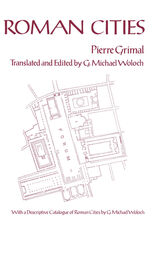 Roman Cities
G. Michael Woloch
University of Wisconsin Press, 1984 Roman Cities combines G. Michael Woloch’s translation of Les villes romaines, Pierre Grimal’s noted French work on Roman city planning, archeology, and urban history, with Woloch’s additional notes and descriptions of the cities mentioned by Grimal, as well as other important Roman cities. The book provides a brief history and description of more than a hundred Roman cities, an extensive master bibliography, and a comprehensive glossary. Roman Cities will interest both scholars and students of Roman history and archeology, city planning, urban geography, and the social sciences. The glossary and bibliography make the book of value to specialists pursuing a particular topic and to students, history buffs, and amateur archaeologists seeking to broaden their understanding of the Roman city planning methods that are such an integral part of our modern urban heritage.
Roman Cities provides the first comprehensive study in English of major Roman cities, including an excellent coverage of the Roman legacy which was transmitted to medieval and modern trends in architecture and urban planning..
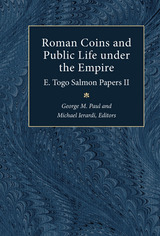 Roman Coins and Public Life under the Empire: E. Togo Salmon Papers II
George M. Paul and Michael Ierardi, Editors
University of Michigan Press, 1999 Roman coins often shed light on Roman public life and society through the legends, portraits, and images they bear. The papers collected in this volume were originally presented at the Second E. Togo Salmon Conference on Roman Studies. The eight contributors are specialists in Roman coins or Roman history and in the relations between them.
Coins are a unique source of information about the Roman world. In the case of the Roman Empire they were issued by or with the approval of the ruling power. The representations and legends they show therefore present an official view of contemporary affairs. The coins themselves, minted for official purposes such as paying the army, when studied carefully can help reconstruct official policies. They can also occasionally reveal what monuments now lost may have looked like.
It is not infrequent to come across pleas that the ancient historian should make more frequent use of numismatic evidence. These essays make clear that efforts are being made both by numismatists and by historians to bring the two disciplines together. At the same time the papers reveal that the task is by no means a straightforward one. The survival of Roman coins is variable, and so attempts to reconstruct the size and distribution of issues calls for skilled and experienced analysis. This collection of papers provides evidence for the kind of deductions that the historian may make from Roman coins as well as the illustrations of the pitfalls that await the unwary.
Those interested in Roman history, amateur coin collectors, and professional numismatists will all find much here to widen their knowledge of the public context of Roman coins.
George Paul is Professor of Classics, McMaster University. Michael Ierardi is Lecturer in Classics, McMaster University.
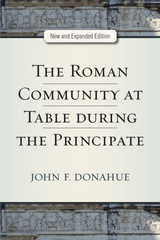 The Roman Community at Table during the Principate, New and Expanded Edition
John F. Donahue
University of Michigan Press, 2017 On its initial publication, The Roman Community at Table during the Principate broke new ground with its approach to the integral place of feasting in ancient Roman culture and the unique power of food to unite and to separate its recipients along class lines throughout the Empire. John F. Donahue’s comprehensive examination of areas such as festal terminology, the social roles of benefactors and beneficiaries, the kinds of foods offered at feasts, and the role of public venues in community banquets draws on over three hundred Latin honorary inscriptions to recreate the ancient Roman feast. Illustrations depicting these inscriptions, as well as the food supply trades and various festal venues, bring important evidence to the study of this vital and enduring social practice. A touchstone for scholars, the work remains fresh and relevant.
This expanded edition of Donahue’s work includes significant new material on current trends in food studies, including the archaeology and bioarchaeology of ancient food and drink; an additional collection of inscriptions on public banquets from the Roman West; and an extensive bibliography of scholarship produced in the last ten years. It will be of interest not only to classicists and historians of the ancient world, but also to anthropologists and sociologists interested in food and social group dynamics.
 Roman Corinth: An Alternative Model for the Classical City
Donald Engels
University of Chicago Press, 1990 In the second century A.D., Corinth was the largest city in Roman Greece. A center of learning, culture, and commerce, it served as the capital of the senatorial province of Achaea and was the focus of apostle Paul's missionary activity. Donald Engels's important revisionist study of this ancient urban area is at once a detailed history of the Roman colony and a provocative socioeconomic analysis. With Corinth as an exemplar, Engels challenges the widely held view that large classical cities were consumer cities, innocent of the market forces that shape modern economies. Instead, he presents an alternative model—the "service city."
Examining a wealth of archaelogical and literary evidence in light of central place theory, and using sound statistical techniques, Engels reconstructs the human geography of the Corinthia, including an estimate of the population. He shows that—given the amount of cultivatable land—rents and taxes levied onthe countryside could not have supported a highly populated city like Corinth. Neither could its inhabitants have supported themselves directly by farming.
Rather, the city constituted a thriving market for domestic, regional, and overseas raw materials, agricultural products, and manufactured goods, at the same time satisfying the needs of those who plied the various land and sea routes that converged there. Corinth provided key governmental and judicial services to the province of Achaea, and its religious festivals, temples, and monuments attracted numerous visitors from all corners of the Roman world. In accounting for the large portion of residents who participated in these various areas outside of the traditional consumer model, Engels reveals the depth and sophistication of the economics of ancient cities.
Roman Corinth is a much-needed critique of the currently dominant approach of ancient urbanism. It will be of crucial interest to scholars and students in classics, ancient history, and urban studies.
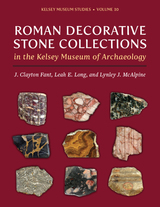 Roman Decorative Stone Collections in the Kelsey Museum of Archaeology
J. Clayton Fant, Leah E. Long, and Lynley J. McAlpine
University of Michigan Press, 2024 At the turn of the twentieth century, Francis W. Kelsey began to amass a large collection of artifacts from ancient sites across the Mediterranean, with an emphasis on Imperial Rome, to broaden the teaching of antiquity at the University of Michigan. Among the objects now housed in the museum that bears his name is a collection of seven hundred colorful stones dating to the Roman period, one of the largest and most varied collections of Roman decorative stones outside Europe. These pieces were obtained as archaeological artifacts, mostly architectural, with many deriving from well-known ancient buildings, such as the Baths of Diocletian in Rome and the Palace of Herod in Jericho, allowing for new interpretations of their architectural decoration and design. Chapters trace the formation of the collection, study the archaeology of the artifacts, and detail the history of each stone and its study with a comprehensive bibliography.
In keeping with the nature of the collection, Roman Decorative Stone Collections focuses on archaeological contexts and object biographies, from the stones’ first use to their eventual display in the Kelsey Museum. Entries are accompanied by rich photographs detailing the stones’ appearances, environmental factors, and their collectors. The fully illustrated catalog includes essays deriving from Kelsey’s original notes on sources, buildings, sites, and dealers. As the first formal catalog of these items, Roman Decorative Stone Collections is an accessible resource of Roman archaeology, antiquities, and the decorative arts.
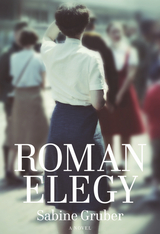 Roman Elegy
Sabine Gruber
Haus Publishing, 2013 It is 2009: writer Clara Burger arrives in Rome to sort out the affairs and clear the flat of her school friend Ines, prematurely dead from cancer. Sorting through Ines's belongings, Clara finds a manuscript containing not only an autobiographical account of Ines's strange experiences while working as a chambermaid in Rome in the summer of 1978, but also the life story of her former employer, the hotelier Emma Manente. Originally from Italy's German-speaking enclave South Tyrol (like Clara and Ines), Emma first comes to Rome in the late 1930s and becomes an eyewitness to the capital's turbulent past and present: Mussolini's fascist regime, the Nazi occupation and an uneasy postwar democracy threatened by corruption and extremism. In a sweeping tale of remembrance and reconciliation, of lives unfulfilled and loves unrequited, Roman Elegy interweaves the personal stories of three resilient women with a fascinating historical narrative of the Eternal City, in all its contrasting squalor and beauty, compassion and savagery.
The Roman Empire
Paul Veyne
Harvard University Press This compact book—which appeared earlier in the multivolume series A History of Private Life—is a history of the Roman Empire in pagan times. It is an interpretation setting forth in detail the universal civilization of the Romans—so much of it Hellenic—that later gave way to Christianity. The civilization, culture, literature, art, and even religion of Rome are discussed in this masterly work by a leading scholar.
The Roman Empire: Roots of Imperialism
Neville Morley
Pluto Press, 2010 A millennium and a half after the end of the period of its unquestioned dominance, Rome remains a significant presence in western culture. This book explores what the empire meant to its subjects.
The idea of Rome has long outlived the physical empire that gave it form, and now holds sway over vastly more people and a far greater geographical area than the Romans ever ruled. It continues to shape our understanding of the nature of imperialism, and thus, however subtly, to influence the workings of the world. Unlike most works on Roman history, this book does not offer a simplistic narrative, with military triumph followed by decline and fall. Instead, it analyses the origins and nature of Roman imperialism, its economic, social and cultural impact on the regions it conquered, and its continuing influence in discussions and debates about modern imperialism.
The Roman Empire: Second Edition
Colin Wells
Harvard University Press, 1995 This sweeping history of the Roman Empire from 44 BC to AD 235 has three purposes: to describe what was happening in the central administration and in the entourage of the emperor; to indicate how life went on in Italy and the provinces, in the towns, in the countryside, and in the army camps; and to show how these two different worlds impinged on each other. Colin Wells’s vivid account is now available in an up-to-date second edition.
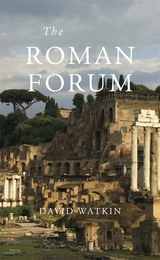 The Roman Forum
David Watkin
Harvard University Press, 2009 One of the most visited sites in Italy, the Roman Forum is also one of the best-known wonders of the Roman world. Though a highpoint on the tourist route around Rome, for many visitors the site can be a baffling disappointment. Several of the monuments turn out to be nineteenth- or twentieth-century reconstructions, while the rubble and the holes made by archaeologists have an unclear relationship to the standing remains, and, to all but the most skilled Romanists, the Forum is an unfortunate mess.
David Watkin sheds completely new light on the Forum, examining the roles of the ancient remains while revealing what exactly the standing structures embody—including the rarely studied medieval, Renaissance, and Baroque churches, as well as the nearby monuments that have important histories of their own. Watkin asks the reader to look through the veneer of archaeology to rediscover the site as it was famous for centuries. This involves offering a remarkable and engaging new vision of a well-visited, if often misunderstood, wonder. It will be enjoyed by readers at home and serve as a guide in the Forum.
The Roman Frontier in Central Jordan: Final Report on the Limes Arabicus Project, 1980–1989
S. Thomas Parker
Harvard University Press, 2006 Until the 1980s, the Roman frontier in modern Jordan was among the least studied of the empire's far-flung border regions. From 1980 until 1989, the Limes Arabicus Project investigated the frontier east of the Dead Sea. Excavation focused on the late Roman legionary fortress of el-Lejjun as well as soundings of four smaller but contemporaneous forts. The project's regional survey recorded over five hundred other archaeological sites in the area, dating from the Paleolithic to the Late Islamic periods. This report presents detailed results from the excavated forts, a broad range of material cultural evidence from animal bones to bedouin burials, and provides a synthesis of the history of this frontier, which witnessed the first confrontation between the Byzantine Empire and the forces of Islam.
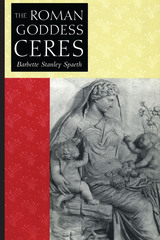 The Roman Goddess Ceres
By Barbette Stanley Spaeth
University of Texas Press, 1995 Interest in goddess worship is growing in contemporary society, as women seek models for feminine spirituality and wholeness. New cults are developing around ancient goddesses from many cultures, although their modern adherents often envision and interpret the goddesses very differently than their original worshippers did. In this thematic study of the Roman goddess Ceres, Barbette Spaeth explores the rich complexity of meanings and functions that grew up around the goddess from the prehistoric period to the Late Roman Empire. In particular, she examines two major concepts, fertility and liminality, and two social categories, the plebs and women, which were inextricably linked with Ceres in the Roman mind. Spaeth then analyzes an image of the goddess in a relief of the Ara Pacis, an important state monument of the Augustan period, showing how it incorporates all these varied roles and associations of Ceres. This interpretation represents a new contribution to art history. With its use of literary, epigraphical, numismatic, artistic, and archaeological evidence, The Roman Goddess Ceres presents a more encompassing view of the goddess than was previously available. It will be important reading for all students of Classics, as well as for a general audience interested in New Age, feminist, or pagan spirituality.
Roman Historical Sources and Institutions
Edited by Henry A. Sanders
University of Michigan Press, 1904 This volume of papers presents studies by individual authors on topics relating to Roman history and historiography, such as the origin of the Tarpeian Rock, Dio Cassius on epigraphic sources, and centurions as alternate commanders for corps of auxiliary soldiers. This is the first in a series of volumes that will alternate between historical and philological topics.
Roman History and Mythology
Edited by Henry A. Sanders
University of Michigan Press, 1910 This volume of papers presents studies by individual authors on topics relating to Roman history and mythology, such as the myths of Hercules, and the place of Roman law in ancient culture and society.
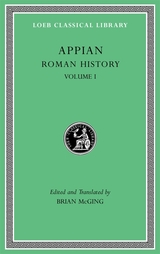 Roman History, Volume I
Appian
Harvard University Press, 2019 Rome’s foreign wars, nation by nation.
Appian (Appianus) is among our principal sources for the history of the Roman Republic, particularly in the second and first centuries BC, and sometimes our only source, as for the Third Punic War and the destruction of Carthage. Born circa AD 95, Appian was an Alexandrian official at ease in the highest political and literary circles who later became a Roman citizen and advocate. He apparently received equestrian rank, for in his later years he was offered a procuratorship. He died during the reign of Antoninus Pius (emperor 138–161).
Appian’s theme is the process by which the Roman Empire achieved its contemporary prosperity, and his unique method is to trace in individual books the story of each nation’s wars with Rome up through her own civil wars. Although this triumph of “harmony and monarchy” was achieved through characteristic Roman virtues, Appian is unusually objective about Rome’s shortcomings along the way. His history is particularly strong on financial and economic matters, and on the operations of warfare and diplomacy.
Of the work’s original twenty-four books, only the Preface and Books 6–9 and 11–17 are preserved complete or nearly so: those on the Spanish, Hannibalic, African, Illyrian, Syrian, and Mithridatic wars, and five books on the civil wars.
This edition of Appian replaces the original Loeb edition by Horace White and adds the fragments, as well as his letter to Fronto.
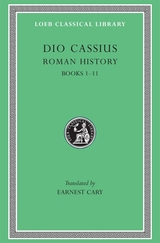 Roman History, Volume I: Books 1–11
Dio Cassius
Harvard University Press A sweeping chronicle from Aeneas to Alexander Severus.
Dio Cassius (Cassius Dio), circa AD 150–235, was born at Nicaea in Bithynia in Asia Minor. On the death of his father (Roman governor of Cilicia) he went in 180 to Rome, entered the Senate, and under the emperor Commodus was an advocate. He held high offices, becoming a close friend of several emperors; he was made governor of Pergamum and Smyrna; consul in 220; proconsul of Africa; governor of Dalmatia and then of Pannonia; and consul again in 229.
Of the eighty books of Dio's great work Roman History, covering the era from the legendary landing of Aeneas in Italy to the reign of Alexander Severus (AD 222–235), we possess Books 36–60 (36 and 55–60 have gaps), which cover the years 68 BC–AD 47. The missing portions are partly supplied, for the earlier gaps by Zonaras, who relies closely on Dio, and for some later gaps (Book 35 onwards) by John Xiphilinus (of the eleventh century). There are also many excerpts. The facilities for research afforded by Dio's official duties and his own industry make him a very vital source for Roman history of the last years of the republic and the first four emperors.
The Loeb Classical Library edition of Dio Cassius is in nine volumes.
Roman History, Volume I: Books 1-8.1
Appian
Harvard University Press Appian (Appianus) was a Greek official of Alexandria. He saw the Jewish rebellion of 116 CE, and later became a Roman citizen and advocate and received the rank of eques (knight). In his older years he held a procuratorship. He died during the reign of Antoninus Pius who was emperor 138161 CE. Honest admirer of the Roman empire though ignorant of the institutions of the earlier Roman republic, he wrote, in the simple 'common' dialect, 24 books of 'Roman affairs', in fact conquests, from the beginnings to the times of Trajan (emperor 98117 CE). Eleven have come down to us complete, or nearly so, namely those on the Spanish, Hannibalic, Punic, Illyrian, Syrian, and Mithridatic wars, and five books on the Civil Wars. They are valuable records of military history.
The Loeb Classical Library edition of Appian is in four volumes.
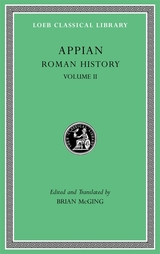 Roman History, Volume II
Appian
Harvard University Press, 2019 Rome’s foreign wars, nation by nation.
Appian (Appianus) is among our principal sources for the history of the Roman Republic, particularly in the second and first centuries BC, and sometimes our only source, as for the Third Punic War and the destruction of Carthage. Born circa AD 95, Appian was an Alexandrian official at ease in the highest political and literary circles who later became a Roman citizen and advocate. He apparently received equestrian rank, for in his later years he was offered a procuratorship. He died during the reign of Antoninus Pius (emperor 138–161).
Appian’s theme is the process by which the Roman Empire achieved its contemporary prosperity, and his unique method is to trace in individual books the story of each nation’s wars with Rome up through her own civil wars. Although this triumph of “harmony and monarchy” was achieved through characteristic Roman virtues, Appian is unusually objective about Rome’s shortcomings along the way. His history is particularly strong on financial and economic matters, and on the operations of warfare and diplomacy.
Of the work’s original twenty-four books, only the Preface and Books 6–9 and 11–17 are preserved complete or nearly so: those on the Spanish, Hannibalic, African, Illyrian, Syrian, and Mithridatic wars, and five books on the civil wars.
This edition of Appian replaces the original Loeb edition by Horace White and adds the fragments, as well as his letter to Fronto.
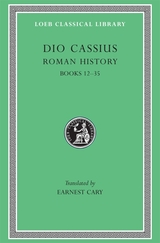 Roman History, Volume II: Books 12–35
Dio Cassius
Harvard University Press A sweeping chronicle from Aeneas to Alexander Severus.
Dio Cassius (Cassius Dio), circa AD 150–235, was born at Nicaea in Bithynia in Asia Minor. On the death of his father (Roman governor of Cilicia) he went in 180 to Rome, entered the Senate, and under the emperor Commodus was an advocate. He held high offices, becoming a close friend of several emperors; he was made governor of Pergamum and Smyrna; consul in 220; proconsul of Africa; governor of Dalmatia and then of Pannonia; and consul again in 229.
Of the eighty books of Dio's great work Roman History, covering the era from the legendary landing of Aeneas in Italy to the reign of Alexander Severus (AD 222–235), we possess Books 36–60 (36 and 55–60 have gaps), which cover the years 68 BC–AD 47. The missing portions are partly supplied, for the earlier gaps by Zonaras, who relies closely on Dio, and for some later gaps (Book 35 onwards) by John Xiphilinus (of the eleventh century). There are also many excerpts. The facilities for research afforded by Dio's official duties and his own industry make him a very vital source for Roman history of the last years of the republic and the first four emperors.
The Loeb Classical Library edition of Dio Cassius is in nine volumes.
Roman History, Volume II: Books 8.2-12
Appian
Harvard University Press Appian (Appianus) was a Greek official of Alexandria. He saw the Jewish rebellion of 116 CE, and later became a Roman citizen and advocate and received the rank of eques (knight). In his older years he held a procuratorship. He died during the reign of Antoninus Pius who was emperor 138161 CE. Honest admirer of the Roman empire though ignorant of the institutions of the earlier Roman republic, he wrote, in the simple 'common' dialect, 24 books of 'Roman affairs', in fact conquests, from the beginnings to the times of Trajan (emperor 98117 CE). Eleven have come down to us complete, or nearly so, namely those on the Spanish, Hannibalic, Punic, Illyrian, Syrian, and Mithridatic wars, and five books on the Civil Wars. They are valuable records of military history.
The Loeb Classical Library edition of Appian is in four volumes.
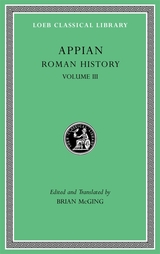 Roman History, Volume III
Appian
Harvard University Press, 2019 Rome’s foreign wars, nation by nation.
Appian (Appianus) is among our principal sources for the history of the Roman Republic, particularly in the second and first centuries BC, and sometimes our only source, as for the Third Punic War and the destruction of Carthage. Born circa AD 95, Appian was an Alexandrian official at ease in the highest political and literary circles who later became a Roman citizen and advocate. He apparently received equestrian rank, for in his later years he was offered a procuratorship. He died during the reign of Antoninus Pius (emperor 138–161).
Appian’s theme is the process by which the Roman Empire achieved its contemporary prosperity, and his unique method is to trace in individual books the story of each nation’s wars with Rome up through her own civil wars. Although this triumph of “harmony and monarchy” was achieved through characteristic Roman virtues, Appian is unusually objective about Rome’s shortcomings along the way. His history is particularly strong on financial and economic matters, and on the operations of warfare and diplomacy.
Of the work’s original twenty-four books, only the Preface and Books 6–9 and 11–17 are preserved complete or nearly so: those on the Spanish, Hannibalic, African, Illyrian, Syrian, and Mithridatic wars, and five books on the civil wars.
This edition of Appian replaces the original Loeb edition by Horace White and adds the fragments, as well as his letter to Fronto.
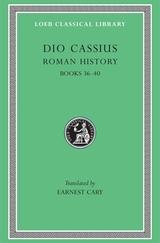 Roman History, Volume III: Books 36–40
Dio Cassius
Harvard University Press A sweeping chronicle from Aeneas to Alexander Severus.
Dio Cassius (Cassius Dio), circa AD 150–235, was born at Nicaea in Bithynia in Asia Minor. On the death of his father (Roman governor of Cilicia) he went in 180 to Rome, entered the Senate, and under the emperor Commodus was an advocate. He held high offices, becoming a close friend of several emperors; he was made governor of Pergamum and Smyrna; consul in 220; proconsul of Africa; governor of Dalmatia and then of Pannonia; and consul again in 229.
Of the eighty books of Dio's great work Roman History, covering the era from the legendary landing of Aeneas in Italy to the reign of Alexander Severus (AD 222–235), we possess Books 36–60 (36 and 55–60 have gaps), which cover the years 68 BC–AD 47. The missing portions are partly supplied, for the earlier gaps by Zonaras, who relies closely on Dio, and for some later gaps (Book 35 onwards) by John Xiphilinus (of the eleventh century). There are also many excerpts. The facilities for research afforded by Dio's official duties and his own industry make him a very vital source for Roman history of the last years of the republic and the first four emperors.
The Loeb Classical Library edition of Dio Cassius is in nine volumes.
Roman History, Volume III: The Civil Wars, Books 1-3.26
Appian
Harvard University Press Appian (Appianus) was a Greek official of Alexandria. He saw the Jewish rebellion of 116 CE, and later became a Roman citizen and advocate and received the rank of eques (knight). In his older years he held a procuratorship. He died during the reign of Antoninus Pius who was emperor 138161 CE. Honest admirer of the Roman empire though ignorant of the institutions of the earlier Roman republic, he wrote, in the simple 'common' dialect, 24 books of 'Roman affairs', in fact conquests, from the beginnings to the times of Trajan (emperor 98117 CE). Eleven have come down to us complete, or nearly so, namely those on the Spanish, Hannibalic, Punic, Illyrian, Syrian, and Mithridatic wars, and five books on the Civil Wars. They are valuable records of military history.
The Loeb Classical Library edition of Appian is in four volumes.
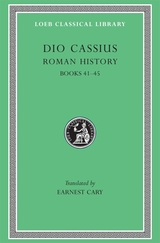 Roman History, Volume IV: Books 41–45
Dio Cassius
Harvard University Press A sweeping chronicle from Aeneas to Alexander Severus.
Dio Cassius (Cassius Dio), circa AD 150–235, was born at Nicaea in Bithynia in Asia Minor. On the death of his father (Roman governor of Cilicia) he went in 180 to Rome, entered the Senate, and under the emperor Commodus was an advocate. He held high offices, becoming a close friend of several emperors; he was made governor of Pergamum and Smyrna; consul in 220; proconsul of Africa; governor of Dalmatia and then of Pannonia; and consul again in 229.
Of the eighty books of Dio's great work Roman History, covering the era from the legendary landing of Aeneas in Italy to the reign of Alexander Severus (AD 222–235), we possess Books 36–60 (36 and 55–60 have gaps), which cover the years 68 BC–AD 47. The missing portions are partly supplied, for the earlier gaps by Zonaras, who relies closely on Dio, and for some later gaps (Book 35 onwards) by John Xiphilinus (of the eleventh century). There are also many excerpts. The facilities for research afforded by Dio's official duties and his own industry make him a very vital source for Roman history of the last years of the republic and the first four emperors.
The Loeb Classical Library edition of Dio Cassius is in nine volumes.
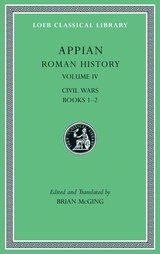 Roman History, Volume IV: Civil Wars, Books 1–2
Appian
Harvard University Press, 2019 Rome’s internal conflicts, from the Gracchi to the Empire.
Appian (Appianus) is among our principal sources for the history of the Roman Republic, particularly in the second and first centuries BC, and sometimes our only source, as for the Third Punic War and the destruction of Carthage. Born circa AD 95, Appian was an Alexandrian official at ease in the highest political and literary circles who later became a Roman citizen and advocate. He apparently received equestrian rank, for in his later years he was offered a procuratorship. He died during the reign of Antoninus Pius (emperor 138–161).
Appian’s theme is the process by which the Roman Empire achieved its contemporary prosperity, and his unique method is to trace in individual books the story of each nation’s wars with Rome up through her own civil wars. Although this triumph of “harmony and monarchy” was achieved through characteristic Roman virtues, Appian is unusually objective about Rome’s shortcomings along the way. His history is particularly strong on financial and economic matters, and on the operations of warfare and diplomacy.
Of the work’s original twenty-four books, only the Preface and Books 6–9 and 11–17 are preserved complete or nearly so: those on the Spanish, Hannibalic, African, Illyrian, Syrian, and Mithridatic wars, and five books on the civil wars.
This edition of Appian replaces the original Loeb edition by Horace White and adds the fragments, as well as his letter to Fronto.
Roman History, Volume IV: The Civil Wars, Books 3.27–5
Appian
Harvard University Press Appian (Appianus) was a Greek official of Alexandria. He saw the Jewish rebellion of 116 CE, and later became a Roman citizen and advocate and received the rank of eques (knight). In his older years he held a procuratorship. He died during the reign of Antoninus Pius who was emperor 138–161 CE. Honest admirer of the Roman empire though ignorant of the institutions of the earlier Roman republic, he wrote, in the simple “common” dialect, 24 books of “Roman affairs,” in fact conquests, from the beginnings to the times of Trajan (emperor 98–117 CE). Eleven have come down to us complete, or nearly so, namely those on the Spanish, Hannibalic, Punic, Illyrian, Syrian, and Mithridatic wars, and five books on the Civil Wars. They are valuable records of military history.
The Loeb Classical Library edition of Appian is in four volumes.
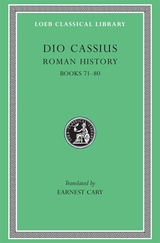 Roman History, Volume IX: Books 71–80
Dio Cassius
Harvard University Press A sweeping chronicle from Aeneas to Alexander Severus.
Dio Cassius (Cassius Dio), circa AD 150–235, was born at Nicaea in Bithynia in Asia Minor. On the death of his father (Roman governor of Cilicia) he went in 180 to Rome, entered the Senate, and under the emperor Commodus was an advocate. He held high offices, becoming a close friend of several emperors; he was made governor of Pergamum and Smyrna; consul in 220; proconsul of Africa; governor of Dalmatia and then of Pannonia; and consul again in 229.
Of the eighty books of Dio's great work Roman History, covering the era from the legendary landing of Aeneas in Italy to the reign of Alexander Severus (AD 222–235), we possess Books 36–60 (36 and 55–60 have gaps), which cover the years 68 BC–AD 47. The missing portions are partly supplied, for the earlier gaps by Zonaras, who relies closely on Dio, and for some later gaps (Book 35 onwards) by John Xiphilinus (of the eleventh century). There are also many excerpts. The facilities for research afforded by Dio's official duties and his own industry make him a very vital source for Roman history of the last years of the republic and the first four emperors.
The Loeb Classical Library edition of Dio Cassius is in nine volumes.
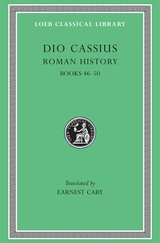 Roman History, Volume V: Books 46–50
Dio Cassius
Harvard University Press A sweeping chronicle from Aeneas to Alexander Severus.
Dio Cassius (Cassius Dio), circa AD 150–235, was born at Nicaea in Bithynia in Asia Minor. On the death of his father (Roman governor of Cilicia) he went in 180 to Rome, entered the Senate, and under the emperor Commodus was an advocate. He held high offices, becoming a close friend of several emperors; he was made governor of Pergamum and Smyrna; consul in 220; proconsul of Africa; governor of Dalmatia and then of Pannonia; and consul again in 229.
Of the eighty books of Dio's great work Roman History, covering the era from the legendary landing of Aeneas in Italy to the reign of Alexander Severus (AD 222–235), we possess Books 36–60 (36 and 55–60 have gaps), which cover the years 68 BC–AD 47. The missing portions are partly supplied, for the earlier gaps by Zonaras, who relies closely on Dio, and for some later gaps (Book 35 onwards) by John Xiphilinus (of the eleventh century). There are also many excerpts. The facilities for research afforded by Dio's official duties and his own industry make him a very vital source for Roman history of the last years of the republic and the first four emperors.
The Loeb Classical Library edition of Dio Cassius is in nine volumes.
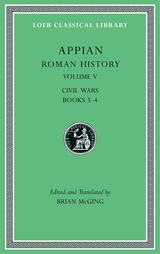 Roman History, Volume V: Civil Wars, Books 3–4
Appian
Harvard University Press, 2019 Rome’s internal conflicts, from the Gracchi to the Empire.
Appian (Appianus) is among our principal sources for the history of the Roman Republic, particularly in the second and first centuries BC, and sometimes our only source, as for the Third Punic War and the destruction of Carthage. Born circa AD 95, Appian was an Alexandrian official at ease in the highest political and literary circles who later became a Roman citizen and advocate. He apparently received equestrian rank, for in his later years he was offered a procuratorship. He died during the reign of Antoninus Pius (emperor 138–161).
Appian’s theme is the process by which the Roman Empire achieved its contemporary prosperity, and his unique method is to trace in individual books the story of each nation’s wars with Rome up through her own civil wars. Although this triumph of “harmony and monarchy” was achieved through characteristic Roman virtues, Appian is unusually objective about Rome’s shortcomings along the way. His history is particularly strong on financial and economic matters, and on the operations of warfare and diplomacy.
Of the work’s original twenty-four books, only the Preface and Books 6–9 and 11–17 are preserved complete or nearly so: those on the Spanish, Hannibalic, African, Illyrian, Syrian, and Mithridatic wars, and five books on the civil wars.
This edition of Appian replaces the original Loeb edition by Horace White and adds the fragments, as well as his letter to Fronto.
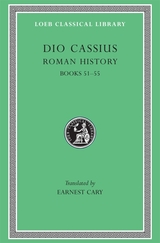 Roman History, Volume VI: Books 51–55
Dio Cassius
Harvard University Press A sweeping chronicle from Aeneas to Alexander Severus.
Dio Cassius (Cassius Dio), circa AD 150–235, was born at Nicaea in Bithynia in Asia Minor. On the death of his father (Roman governor of Cilicia) he went in 180 to Rome, entered the Senate, and under the emperor Commodus was an advocate. He held high offices, becoming a close friend of several emperors; he was made governor of Pergamum and Smyrna; consul in 220; proconsul of Africa; governor of Dalmatia and then of Pannonia; and consul again in 229.
Of the eighty books of Dio's great work Roman History, covering the era from the legendary landing of Aeneas in Italy to the reign of Alexander Severus (AD 222–235), we possess Books 36–60 (36 and 55–60 have gaps), which cover the years 68 BC–AD 47. The missing portions are partly supplied, for the earlier gaps by Zonaras, who relies closely on Dio, and for some later gaps (Book 35 onwards) by John Xiphilinus (of the eleventh century). There are also many excerpts. The facilities for research afforded by Dio's official duties and his own industry make him a very vital source for Roman history of the last years of the republic and the first four emperors.
The Loeb Classical Library edition of Dio Cassius is in nine volumes.
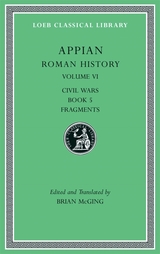 Roman History, Volume VI: Civil Wars, Book 5. Fragments
Appian
Harvard University Press, 2019 Rome’s internal conflicts, from the Gracchi to the Empire.
Appian (Appianus) is among our principal sources for the history of the Roman Republic, particularly in the second and first centuries BC, and sometimes our only source, as for the Third Punic War and the destruction of Carthage. Born circa AD 95, Appian was an Alexandrian official at ease in the highest political and literary circles who later became a Roman citizen and advocate. He apparently received equestrian rank, for in his later years he was offered a procuratorship. He died during the reign of Antoninus Pius (emperor 138–161).
Appian’s theme is the process by which the Roman Empire achieved its contemporary prosperity, and his unique method is to trace in individual books the story of each nation’s wars with Rome up through her own civil wars. Although this triumph of “harmony and monarchy” was achieved through characteristic Roman virtues, Appian is unusually objective about Rome’s shortcomings along the way. His history is particularly strong on financial and economic matters, and on the operations of warfare and diplomacy.
Of the work’s original twenty-four books, only the Preface and Books 6–9 and 11–17 are preserved complete or nearly so: those on the Spanish, Hannibalic, African, Illyrian, Syrian, and Mithridatic wars, and five books on the civil wars.
This edition of Appian replaces the original Loeb edition by Horace White and adds the fragments, as well as his letter to Fronto.
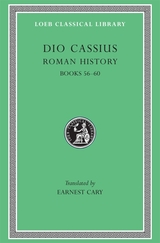 Roman History, Volume VII: Books 56–60
Dio Cassius
Harvard University Press A sweeping chronicle from Aeneas to Alexander Severus.
Dio Cassius (Cassius Dio), circa AD 150–235, was born at Nicaea in Bithynia in Asia Minor. On the death of his father (Roman governor of Cilicia) he went in 180 to Rome, entered the Senate, and under the emperor Commodus was an advocate. He held high offices, becoming a close friend of several emperors; he was made governor of Pergamum and Smyrna; consul in 220; proconsul of Africa; governor of Dalmatia and then of Pannonia; and consul again in 229.
Of the eighty books of Dio's great work Roman History, covering the era from the legendary landing of Aeneas in Italy to the reign of Alexander Severus (AD 222–235), we possess Books 36–60 (36 and 55–60 have gaps), which cover the years 68 BC–AD 47. The missing portions are partly supplied, for the earlier gaps by Zonaras, who relies closely on Dio, and for some later gaps (Book 35 onwards) by John Xiphilinus (of the eleventh century). There are also many excerpts. The facilities for research afforded by Dio's official duties and his own industry make him a very vital source for Roman history of the last years of the republic and the first four emperors.
The Loeb Classical Library edition of Dio Cassius is in nine volumes.
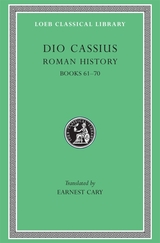 Roman History, Volume VIII: Books 61–70
Dio Cassius
Harvard University Press A sweeping chronicle from Aeneas to Alexander Severus.
Dio Cassius (Cassius Dio), circa AD 150–235, was born at Nicaea in Bithynia in Asia Minor. On the death of his father (Roman governor of Cilicia) he went in 180 to Rome, entered the Senate, and under the emperor Commodus was an advocate. He held high offices, becoming a close friend of several emperors; he was made governor of Pergamum and Smyrna; consul in 220; proconsul of Africa; governor of Dalmatia and then of Pannonia; and consul again in 229.
Of the eighty books of Dio's great work Roman History, covering the era from the legendary landing of Aeneas in Italy to the reign of Alexander Severus (AD 222–235), we possess Books 36–60 (36 and 55–60 have gaps), which cover the years 68 BC–AD 47. The missing portions are partly supplied, for the earlier gaps by Zonaras, who relies closely on Dio, and for some later gaps (Book 35 onwards) by John Xiphilinus (of the eleventh century). There are also many excerpts. The facilities for research afforded by Dio's official duties and his own industry make him a very vital source for Roman history of the last years of the republic and the first four emperors.
The Loeb Classical Library edition of Dio Cassius is in nine volumes.
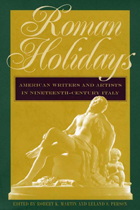 Roman Holidays: American Writers and Artists in Nineteenth-Century Italy
Robert K. Martin
University of Iowa Press, 2001 Featuring essays by twelve prominent American literature scholars, Roman Holidaysexplores the tradition of American travel to Italy and makes a significant contribution to the understanding of nineteenth-century American encounters with Italian culture and, more specifically, with Rome. The increase in American travel to Italy during the nineteenth century was partly a product of improved conditions of travel. As suggested in the title, Italy served nineteenth-century writers and artists as a kind of laboratory site for encountering Others and “other” kinds of experience. No doubt Italy offered a place of holiday—a momentary escape from the familiar—but the journey to Rome, a place urging upon the visitor a new and more complex sense of history, also forced a reexamination of oneself and one's identity. Writers and artists found their religious, political, and sexual assumptions challenged. Nathaniel Hawthorne's The Marble Faun has a prominent place in this collection: as Henry James commented in his study of Hawthorne, the book was “part of the intellectual equipment of the Anglo-Saxon visitor to Rome.” The essayists also examine works by James, Fuller, Melville, Douglass, Howells, and other writers as well as such sculptors as Hiram Powers, William Wetmore Story, and Harriet Hosmer. Bringing contemporary concerns about gender, race, and class to bear upon nineteenth-century texts, Roman Holidays is an especially timely contribution to nineteenth-century American studies.
Roman Infrastructure in Early Medieval Britain: The Adaptations of the Past in Text and Stone
Mateusz Fafinski
Amsterdam University Press, 2021 Early Medieval Britain was more Roman than we think. The Roman Empire left vast infrastructural resources on the island. These resources lay buried not only in dirt and soil, but also in texts, laws, chronicles, charters, even churches and landscapes. This book uncovers them and shows how they shaped Early Medieval Britain. Infrastructures, material and symbolic, can work in ways that are not immediately obvious and exert an influence long after their creators have gone. Infrastructure can also rest dormant and be reactivated with a changed function, role and appearance. This is not a simple story of continuity and discontinuity: It is a story of adaptation and transformation, of how the Roman infrastructural past was used and re-used, and also how it influenced the later societies of Britain.
 Roman Military Diplomas VI
Edited by Paul Holder
University of London Press, 2024 The sixth volume in the renowned Roman Military Diplomas series brings together—in one accessible collection—the Roman military diplomas published between 2004 and 2007.
Each of the 179 diplomas collected here has been cataloged, transcribed, and reconstructed alongside information relating to its physical description, findspot, state of preservation, current location, and new readings, helping to illuminate everything from the commanders of units to the social lives of soldiers. The volume also includes a revised chronology of the diplomas, appendices providing important criteria in dating the fragments, comprehensive indices of witnesses, persons, places, and units, and—for the first time—a table of concordances enabling concurrent work with previous volumes in the Roman Military Diplomas series. Collectively, the volume offers new insights into Roman military procedures and personnel, the social and legal status of soldiers, and the afterlife of the diplomas. It is an essential reference tool for anyone researching Roman imperial history, the Roman army, and the Roman study of ancient inscriptions.
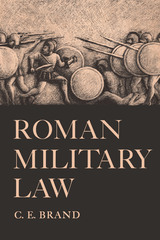 Roman Military Law
By C. E. Brand
University of Texas Press, 1968 Rome was the law-giver for much of the modern world. She was also the greatest military power of antiquity, operating her military organization with remarkable efficiency and effectiveness throughout most of the then-known world. In view of the importance of both the legal and military aspects of the Roman Empire, an account of their combination in a system of disciplinary control for the Roman armies is of considerable significance to historians in both fields—and, in fact, to scholars in general. In Roman Military Law, C. E. Brand describes this system of control. Since a characterization of such a system can be made most meaningful only against a background of Roman constitutional government and in the light of ideologies current at the time, Brand follows his initial “Note on Sources” with a sketch of the contemporary Roman scene. This first section includes a discussion of the Roman constitution and an examination of Roman criminal law. The history of Rome, as a republic, principate, and empire, extended over a period of a thousand years, so any attempt to represent a generalized picture must be essentially a matter of extraction and condensation from the voluminous literature of the whole era. Nevertheless, from the fantastic evolution that is the history of Rome, Brand has been able to construct a more or less static historical mosaic that may be considered typically “Roman.” This comes into sharpest focus during the period of the Punic Wars, when the city and its people were most intensely Roman. The picture of the Roman armies is set into this basic framework, in chapters dealing with military organization, disciplinary organization, religion and discipline, and offenses and punishments. The final section of the book considers briefly the vast changes in Roman institutions that came about under the armies of the Empire, and then concludes with the Latin text and an English translation of the only known code of Roman military justice, promulgated sometime during the later Empire, preserved in Byzantine literature, and handed down to medieval times in Latin translations of Byzantine Greek law, which it has heretofore been confused.
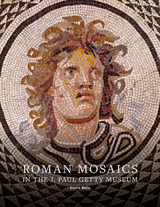 Roman Mosaics in the J. Paul Getty Museum
Alexis Belis
J. Paul Getty Trust, The, 2016 The mosaics in the collection of the J. Paul Getty Museum span the second through the sixth centuries AD and reveal the diversity of compositions found throughout the Roman Empire during this period. Elaborate floors of stone and glass tesserae transformed private dwellings and public buildings alike into spectacular settings of vibrant color, figural imagery, and geometric design. Scenes from mythology, nature, daily life, and spectacles in the arena enlivened interior spaces and reflected the cultural ambitions of wealthy patrons. This online catalogue documents all of the mosaics in the Getty Museum’s collection, presenting their artistry in new color photography as well as the contexts of their discovery and excavation across Rome's expanding empire—from its center in Italy to provinces in southern Gaul, North Africa, and ancient Syria. Reflecting the Getty's commitment to open content, Roman Mosaics in the J. Paul Getty Museum is available online at www.getty.edu/publications/romanmosaics and may be downloaded free of charge in multiple formats. For readers who wish to have a bound reference copy, a paperback edition has been made available for sale. The publication of this online catalogue is issued on the occasion of the exhibition, Roman Mosaics across the Empire, on view at the Getty Villa from March 30 through September 12, 2016.
 The Roman Near East: 31 BC–AD 337
Fergus Millar
Harvard University Press, 1993 From Augustus to Constantine, the Roman Empire in the Near East expanded step by step, southward to the Red Sea and eastward across the Euphrates to the Tigris. In a remarkable work of interpretive history, Fergus Millar shows us this world as it was forged into the Roman provinces of Syria, Judaea, Arabia, and Mesopotamia. His book conveys the magnificent sweep of history as well as the rich diversity of peoples, religions, and languages that intermingle in the Roman Near East. Against this complex backdrop, Millar explores questions of cultural and religious identity and ethnicity—as aspects of daily life in the classical world and as part of the larger issues they raise.
As Millar traces the advance of Roman control, he gives a lucid picture of Rome’s policies and governance over its far-flung empire. He introduces us to major regions of the area and their contrasting communities, bringing out the different strands of culture, communal identity, language, and religious belief in each. The Roman Near East makes it possible to see rabbinic Judaism, early Christianity, and eventually the origins of Islam against the matrix of societies in which they were formed. Millar’s evidence permits us to assess whether the Near East is best seen as a regional variant of Graeco-Roman culture or as in some true sense oriental.
A masterful treatment of a complex period and world, distilling a vast amount of literary, documentary, artistic, and archaeological evidence—always reflecting new findings—this book is sure to become the standard source for anyone interested in the Roman Empire or the history of the Near East.
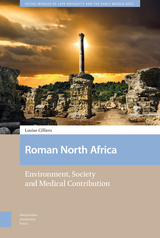 Roman North Africa: Environment, Society and Medical Contribution
Louise Cilliers
Amsterdam University Press, 2019 This book examines the environment and society of North Africa during the late Roman period (fourth and fifth centuries CE) through the writings of Helvius Vindicianus, Theodorus Priscianus, Caelius Aurelianus, and Cassius Felix. These four medical writers, whose translation into Latin of precious Greek texts has been hailed as ‘the achievement of the millennium’ by one modern scholar, provide a unique opportunity to understand North Africa, the most prosperous region of the Roman World during Late Antiquity. Although focusing on medical knowledge and hygiene, their writings provide fresh insights on the environment, economy, population, language, and health facilities of the region. Roman North Africa: Environment, Society and Medical Contribution includes the first full discussion of the exceptional career of the physician Helvius Vindicianus, as well as a valuable reassessment of other writers whose works were read throughout the Middle Ages. It will therefore prove invaluable not only for scholars of Late Antiquity and North Africa, but also for those working on later periods.
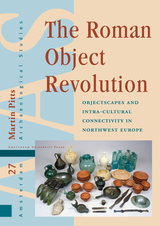 The Roman Object Revolution: Objectscapes and Intra-Cultural Connectivity in Northwest Europe
Martin Pitts
Amsterdam University Press, 2019 Archaeologists working in northwest Europe have long remarked on the sheer quantity and standardisation of objects unearthed from the Roman period, especially compared with earlier eras. What was the historical significance of this boom in standardised objects? With a wide and ever-changing spectrum of innovative objects and styles to choose from, to what extent did the choices made by people in the past really matter? To answer these questions, this book sheds new light on the make-up of late Iron Age and early Roman ‘objectscapes’, through an examination of the circulation and selections of thousands of standardised pots, brooches, and other objects, with emphasis on funerary repertoires, c. 100 bc-ad 100. Breaking with the national frameworks that inform artefact research in much ‘provincial’ Roman archaeology, the book tests the idea that marked increases in the movement of people and objects fostered pan-regional culture(s) and transformed societies. Using a rich database of cemeteries and settlements spanning a swathe of northwest Europe, including southern Britannia, Gallia Belgica, and Germania Inferior, the study extensively applies multivariate statistics (such as Correspondence Analysis) to examine the roles of objects in an ever-changing and richly complex cultural milieu.
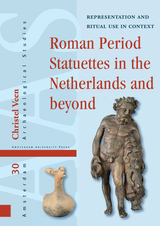 Roman Period Statuettes in the Netherlands and beyond: Representation and Ritual Use in Context
Christel Veen
Amsterdam University Press, 2023 The subject of this study is a relatively rare category of artefacts, bronze and terracotta statuettes that represent deities, human figures and animals. They were introduced in the northwestern provinces by Roman troops from the end of the 1st century BCE onwards. The statuettes have been recovered from military and non-military settlements, the surrounding landscape and, to a far lesser extent, from sanctuaries and graves. Until now, their meaning and function have seldom been analysed in relation to their find-spots. Contrary to traditional studies, they have been examined as one separate category of artefacts, which offers new insights into the distribution pattern and iconographic representation of deities. When studying a group of artefacts, a large research area or a large dataset is required, as well as dateable artefacts and find-contexts. These conditions do not apply to the Netherlands and to the majority of statuettes that are central to this study. Moreover, although the changing appearance of statuettes suggest a transformation of cults, the identities of the owners of these statuettes remain invisible to us. Therefore, the issue of Romanization is not put central here. Instead, the focus is on a specific aspect of religion, known as lived religion, within the wider subject of its transformation in the Roman period: how people used statuettes in everyday life, in the context of their houses and settlements.
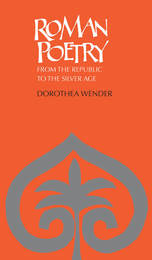 Roman Poetry: From the Republic to the Silver Age
Translated and with Introduction by Dorothea Wender
Southern Illinois University Press, 1991 Meshing her own wit, verve, and gusto with that of the Roman poets she translates, Dorothea Wender strips both the cloak of awe and the dusty mantle of boredom from the classics. Available for the first time in paper, these English verse translations of the major classical Roman poets feature hefty selections from the savage urban satire of Juvenal, the moving philosophy of Lucretius, the elegance of Horace, the grace and humor of Catullus, the grave music of Virgil, the passion of Propertius, the sexy sophistication of Ovid, and the obscenity of Martial. Noting Wender’s “candor,” the Classical Outlook reported that in “20th-century terms, she makes the poems lively and pertinent.” The Boston Globe said, “The conciseness is astonishing, the information [in the introductions to each poet] provocative. The freshness of the selections should do much to augment the audience for these poets and may even inspire examination of the originals.” The best advice came from Wender herself: “Read these good poems.”
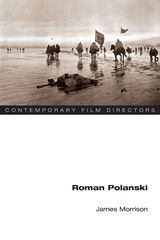 Roman Polanski
James Morrison
University of Illinois Press, 2006 A new take on an eclectic and controversial director James Morrison's critical study offers a comprehensive and critically engaged treatment on Roman Polanski's immense body of work. Tracing the filmmaker's remarkably diverse career from its beginnings to 2007, the book provides commentary on all of Polanski's major films in their historical, cultural, social, and artistic contexts. Morrison locates Polanski's work within the genres of comedy and melodrama, arguing that he is not merely obsessed with the theme of repression, but that his true interest is in the concrete—what is out in the open—and why we so rarely see it. The range of Polanski's filmmaking challenges traditional divisions between high and low culture. For example, The Ninth Gate is a brash pastiche of the horror genre, while The Pianist is an Academy Award-winner about the Holocaust. Dubbing Polanski a relentless critic of modernity, Morrison concludes that his career is representative of the fissures, victories, and rehabilitations of the last fifty years of international cinema. A volume in the series Contemporary Film Directors, edited by James Naremore
Roman Political Ideas and Practice
F. E. Adcock
University of Michigan Press, 1964 A study of Roman politics from the early kings, through the Republic, to the age of the dictatorships. The story unfolds against a background of wars, financial tangles, shifting foreign policy, and personal rivalries. Sir Frank finds the secret of Roman power in the dignity of its great men and the liberty of the small. Though centuries have elapsed since the Caesars, we need not look far to discover in our own day the same conflicts between personal ambition and the dream of peace with dignity that consumed Rome. This book underscores the fragility of all political institutions, including our own.
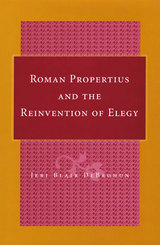 Roman Propertius and the Reinvention of Elegy
Jeri Blair DeBrohun
University of Michigan Press, 2003 Roman Propertius and the Reinvention of Elegy presents an arresting new interpretation of the intricate and complex poetry of Propertius' final collection. Jeri Blair DeBrohun illuminates the manner in which the poet reinvents and revitalizes his elegy in Book 4 by broadening its lyrical promise and ideological horizons.
DeBrohun finds the most striking element of Book 4 to be the apparent polarity of the poems, whose themes are split between new, aetiological subjects of Roman national significance and amatory affairs that evoke the themes of Propertius' first three books. In her compelling reassessment of Propertius' aspirations in Book 4, DeBrohun identifies the conflict between his new ambitions to produce Roman aetiological elegy and his traditional, exclusive devotion to erotic concerns as the central dynamic of his collection. Roman Propertius and the Reinvention of Elegy reveals how the poet came to find in the subcodes of the elegiac genre a medium of interaction between the opposing values of the two themes.
Roman Propertius will interest not only scholars and students of Greek and Roman Poetry but also students of later traditions who are interested in the questions of genre and the relationship between poetry and wider cultural discourses.
Jeri Blair DeBrohun is Associate Professor of Classics, Brown University.
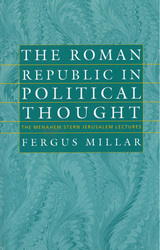 The Roman Republic in Political Thought
Fergus Millar
Brandeis University Press, 2002 It is a fact that the very long-lived Roman Republic has consistently played a surprisingly slight role in political theory and discussions about the nature of democracy, forms of government, and other matters, particularly when compared to the enormous attention paid to fifth-century BCE Athenian democracy. Fergus Millar re-opens the issue of how the Roman Republic was understood and used by political thinkers from the Ancient World to the present. Describing both the reality of the late Roman Republic and showing how its nature was distorted even by contemporary sources, he tracks its treatment (or absence) in political discourse from Thomas Aquinas, Machiavelli, Montesquieu, and Rousseau, and in debates surrounding the creation of the American constitution, particularly in the Federalist papers. In brief, clear prose, with quotations in English from important works, and economical use of endnotes, he reinforces his unconventional thesis about the significance of direct democracy in the late Roman Republic. In the process, he also provides an unprecedented tour through 2000 years of Western political theory from the point of view of the Roman Republic, in general, and theories of direct democracy and the balance of power, in particular.
The Roman Republic: Second Edition
Michael Crawford
Harvard University Press, 1993 Michael Crawford’s highly praised history is now expanded and revised to accommodate recent discoveries and current thinking.
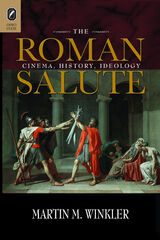 The Roman Salute: Cinema, History, Ideology
Martin M. Winkler
Ohio State University Press, 2009 The raised-arm salute was the most popular symbol of Fascism, Nazism, and related political ideologies in the twentieth century and is said to have derived from an ancient Roman custom. Although modern historians and others employ it as a matter of course, the term “Roman salute” is a misnomer. The true origins of this salute can be traced back to the popular culture of the late nineteenth and early twentieth centuries that dealt with ancient Rome: historical plays and films. The visual culture of stage and screen from the 1890s to the 1920s was chiefly responsible for the wide familiarity of Europeans and Americans with forms of the raised-arm salute and made it readily available for political purposes. The Roman Salute: Cinema, History, Ideology by Martin M. Winkler presents extensive evidence for the modern origin of the raised-arm salute from well before the birth of Fascism and traces its varieties and its dissemination. The continuing presence of certain aspects of Fascism makes an examination of all its facets desirable, especially when the true origins of a symbol as potent as the salute and the history of its dissemination are barely known to classicists and historians of ancient Rome on the one hand, and to scholars of modern European history, on the other. Thus this book will appeal to classicists and historians, including film historians, and will be of interest to readers beyond the academy.
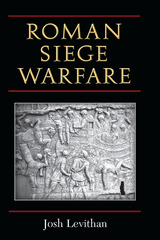 Roman Siege Warfare
Josh Levithan
University of Michigan Press, 2013 Roman siege warfare had its own structure and customs, and expectations both by the besieged and by the attacking army. Sieges are typically sorted by the techniques and technologies that attackers used, but the more fruitful approach offered in Roman Siege Warfare examines the way a siege follows or diverges from typical narrative and operational plotlines. Author Josh Levithan emphasizes the human elements—morale and motivation—rather than the engineering, and he recaptures the sense of a siege as an event in progress that offers numerous attitudes, methods, and outcomes. Sieges involved a concentration of violent effort in space and the practical challenge posed by a high wall: unlike field battles they were sharply defined in time, in space, and in operational terms. Chapters examine motivation and behavior during a siege and focus on examples from both the Roman Republic and the Empire: Polybius, Livy, Julius Caesar, Flavius Josephus, and Ammianus Marcellinus. Levithan examines the “gadgetary turn,” during which writers began to lavish attention on artillery and wall-damaging techniques, fetishizing technology and obscuring the centrality of the assault and of human behavior. This volume speaks to classicists and historians of all stripes. All passages are translated, and references are accessible to nonspecialists. Military historians will also find much of interest in the volume, in its treatment both of Roman military conduct and of wider military practice.
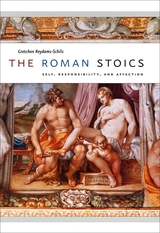 The Roman Stoics: Self, Responsibility, and Affection
Gretchen Reydams-Schils
University of Chicago Press, 2005 Roman Stoic thinkers in the imperial period adapted Greek doctrine to create a model of the self that served to connect philosophical ideals with traditional societal values. The Roman Stoics-the most prominent being Marcus Aurelius-engaged in rigorous self-examination that enabled them to integrate philosophy into the practice of living. Gretchen Reydams-Schils's innovative new book shows how these Romans applied their distinct brand of social ethics to everyday relations and responsibilities.
The Roman Stoics reexamines the philosophical basis that instructed social practice in friendship, marriage, parenting, and community. From this analysis emerge Stoics who were neither cold nor detached, as the stereotype has it, but all too aware of their human weaknesses. In a valuable contribution to current discussions in the humanities on identity, autonomy, and altruism, Reydams-Schils ultimately conveys the wisdom of Stoics to the citizens of modern society.
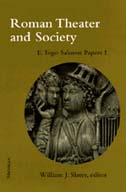 Roman Theater and Society: E. Togo Salmon Papers I
William J. Slater, Editor
University of Michigan Press, 1996 Traditional theater in the Roman world depicted powerful emotions and political ideals that were often the norm in Roman society. Although modern historians have only a hazy perception of performances during both Republic and Empire, testimony to the greatness of the epoch's theater lies in the ruins that stretch across the expanse of the great "vanished empire."
William Slater's new volume Roman Theater and Society brings an important perspective to the much-maligned status of the Roman theater, which has only recently been reappraised and appreciated as uniquely Roman rather than criticized for not being Greek. From this point of embarkation, William Slater and the nine contributors discuss theater in Rome and the Greek east with a definition of performance incorporating not only stage performances but also dinnertime entertainment, sporting events, and political events. Contributors are T. D. Barnes, K. M. Coleman, J. C. Edmonson, E. R. Gebhard, J. R. Green, E. J. Jory, W. D. Lebek, and D. S. Potter.
Individual chapters combine literary evidence with archaeological, thereby engendering a deeper appreciation for the social and political roles of Roman theater. It becomes clear that these roles were of great influence in giving voice to the popular demands of the average Roman. In examining the roles of theater the contributors turn to the players and audience themselves for deeper understanding.
Roman Theater and Society will be of great interest to classicists, theater specialists, and anyone interested in the interplay among plays, theaters, and the people on stage and in the audience.
William J. Slater is Professor of Classics, McMaster University.
The Roman Theatre and Its Audience
Richard C. Beacham
Harvard University Press, 1992 Drawing on recent archaeological investigations, new scholarship, and the author’s own original research and staging experience, this book offers a new and fascinating picture of theatrical performance in the ancient world. Richard Beacham traces the history of the Roman theatre, from its origins in the fourth century B.C. to the demise of formal theatrical activity at the end of antiquity. He characterizes the comedy of Plautus and Terence and the audience to which the Roman playwrights were appealing; describes staging, scenery, costuming, and performance style; and details a variety of theatrical forms, including comedy, tragedy, mime, pantomime, and spectacles.
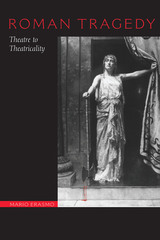 Roman Tragedy: Theatre to Theatricality
By Mario Erasmo
University of Texas Press, 2004 Roman tragedies were written for over three hundred years, but only fragments remain of plays that predate the works of Seneca in the mid-first century C.E., making it difficult to define the role of tragedy in ancient Roman culture. Nevertheless, in this pioneering book, Mario Erasmo draws on all the available evidence to trace the evolution of Roman tragedy from the earliest tragedians to the dramatist Seneca and to explore the role played by Roman culture in shaping the perception of theatricality on and off the stage. Performing a philological analysis of texts informed by semiotic theory and audience reception, Erasmo pursues two main questions in this study: how does Roman tragedy become metatragedy, and how did off-stage theatricality come to compete with the theatre? Working chronologically, he looks at how plays began to incorporate a rhetoricized reality on stage, thus pointing to their own theatricality. And he shows how this theatricality, in turn, came to permeate society, so that real events such as the assassination of Julius Caesar took on theatrical overtones, while Pompey's theatre opening and the lavish spectacles of the emperor Nero deliberately blurred the lines between reality and theatre. Tragedy eventually declined as a force in Roman culture, Erasmo suggests, because off-stage reality became so theatrical that on-stage tragedy could no longer compete.
 The Roman Triumph
Mary Beard
Harvard University Press, 2007 It followed every major military victory in ancient Rome: the successful general drove through the streets to the temple of Jupiter on the Capitoline Hill; behind him streamed his raucous soldiers; in front were his most glamorous prisoners, as well as the booty he’d captured, from enemy ships and precious statues to plants and animals from the conquered territory. Occasionally there was so much on display that the show lasted two or three days.
A radical reexamination of this most extraordinary of ancient ceremonies, this book explores the magnificence of the Roman triumph, but also its darker side. What did it mean when the axle broke under Julius Caesar’s chariot? Or when Pompey’s elephants got stuck trying to squeeze through an arch? Or when exotic or pathetic prisoners stole the general’s show? And what are the implications of the Roman triumph, as a celebration of imperialism and military might, for questions about military power and “victory” in our own day? The triumph, Mary Beard contends, prompted the Romans to question as well as celebrate military glory.
Her richly illustrated work is a testament to the profound importance of the triumph in Roman culture—and for monarchs, dynasts and generals ever since. But how can we re-create the ceremony as it was celebrated in Rome? How can we piece together its elusive traces in art and literature? Beard addresses these questions, opening a window on the intriguing process of sifting through and making sense of what constitutes “history.”
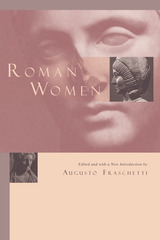 Roman Women
Edited by Augusto Fraschetti
University of Chicago Press, 2001 This collection of essays features important Roman women who were active in politics, theater, cultural life, and religion from the first through the fourth centuries. The contributors draw on rare documents in an attempt to reconstruct in detail the lives and accomplishments of these exceptional women, a difficult task considering that the Romans recorded very little about women. They thought it improper for a woman's virtues to be praised outside the home. Moreover, they believed that a feeble intellect, a weakness in character, and a general incompetence prevented a woman from participating in public life.
Through this investigation, we encounter a number of idiosyncratic personalities. They include the vestal virgin Claudia; Cornelia, a matron; the passionate Fulvia; a mime known as "Lycoris"; the politician Livia; the martyr and writer Vibia Perpetua; a hostess named Helena Augusta; the intellectual Hypatia; and the saint Melania the Younger. Unlike their silent female counterparts, these women stood out in a culture where it was terribly difficult and odd to do so.
The Roman World of Dio Chrysostom
Christopher P. Jones
Harvard University Press, 1978 The Greek orator Dio Chrysostom is a colorful figure, and along with Plutarch one of the major sources of information about Greek civilization during the early Roman Empire. C.P. Jones offers here the first full-length portrait of Dio in English and, at the same time, a view of life in cities such as Alexandria, Tarsus, and Rhodes in the first centuries of our era.
Skillfully combining literary and historical evidence, Mr. Jones describes Dio's birthplace, education, and early career. He examines the civic speeches for what they reveal about Dio's life and art, as well as the life, thought, and language of Greek cities in this period. From these and other works he reinterprets Dio's attitude toward the emperors and Rome. The account is as lucid and pleasantly written as it is carefully documented.
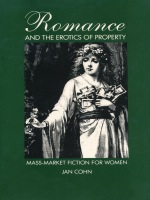 Romance and the Erotics of Property: Mass-Market Fiction for Women
Jan Cohn
Duke University Press, 1988 Romance and the Erotics of Property examines contemporary popular romance from a number of different points of view, probing for codes and subtexts that sometimes exploit and sometimes contradict its surface tale of romantic attraction, frustration, longing, and fulfillment.
Cohn argues that a full understanding of the contemporary romance requires an investigation of its literary and historical sources and analogues. Three principal sources are examined in the context of women's history in bourgeois society. Pride and Prejudice, Jane Erye, and Gone With the Wind demonstrate the development of romance fiction's themes, yet in all three the central love story is complicated by issues of property, the sign of male power. Jan Cohn further considers the development of the genre n the fictions of Harriet Lewis and May Agnes Fleming, prolific and popular American romance writers of the late nineteenth century who developed the role of the villain, thereby bringing into focus the sexual and economic struggles faced by the heroine.
Romance and the Erotics of Property sets romance fiction against a historic and literary background, arguing that contemporary romance disguises as tales of love the subversive fantasies of female appropriation and male property and power.
Romance in HPSG
Edited by Sergio Balari and Luca Dini
CSLI, 1997 This book describes several aspects of syntax and semantics of romance languages assuming the point of view of a constraint-based, non-transformational linguistic theory, i.e. Head-driven Phrase Structure Grammar (HPSG). Besides the widening of the empirical coverage of HPSG the theory, its main significance consists in a refinement of the theory itself, on the basis of data from romance languages. It contains essays discussing phenomena from Catalan, French, Italian and Spanish.
 The Romance of Individualism in Emerson and Nietzsche
David Mikics
Ohio University Press, 2003 The great American thinker Ralph Waldo Emerson and the influential German philosopher Friedrich Nietzsche, though writing in different eras and ultimately developing significantly different philosophies, both praised the individual’s wish to be transformed, to be fully created for the first time. Emerson and Nietzsche challenge us to undertake the task of identity on our own, in order to see (in Nietzsche’s phrase) “how one becomes what one is.” David Mikics’s The Romance of Individualism in Emerson and Nietzsche examines the argument, as well as the affinity, between these two philosophers. Nietzsche was an enthusiastic reader of Emerson and inherited from him an interest in provocation as a means of instruction, an understanding of the permanent importance of moods and transitory moments in our lives, and a sense of the revolutionary character of impulse. Both were deliberately outrageous thinkers, striving to shake us out of our complacency. Rather than choosing between Emerson and Nietzsche, Professor Mikics attends to Nietzsche’s struggle with Emerson’s example and influence. Elegant in its delivery, The Romance of Individualism in Emerson and Nietzsche offers a significant commentary on the visions of several contemporary theorists whose interests intersect with those of Emerson and Nietzsche, especially Stanley Cavell, Jacques Lacan, Slavoj Zizek, and Harold Bloom.
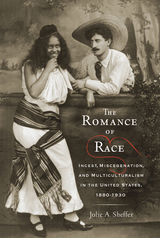 The Romance of Race: Incest, Miscegenation, and Multiculturalism in the United States, 1880-1930
Sheffer, Jolie A.
Rutgers University Press, 2013 In the United States miscegenation is not merely a subject of literature and popular culture. It is in many ways the foundation of contemporary imaginary community. The Romance of Race examines the role of minority women writers and reformers in the creation of our modern American multiculturalism.
The national identity of the United States was transformed between 1880 and 1930 due to mass immigration, imperial expansion, the rise of Jim Crow, and the beginning of the suffrage movement. A generation of women writers and reformers—particularly women of color—contributed to these debates by imagining new national narratives that put minorities at the center of American identity. Jane Addams, Pauline Hopkins, Onoto Watanna (Winnifred Eaton), María Cristina Mena, and Mourning Dove (Christine Quintasket) embraced the images of the United States—and increasingly the world—as an interracial nuclear family. They also reframed public debates through narratives depicting interracial encounters as longstanding, unacknowledged liaisons between white men and racialized women that produced an incestuous, mixed-race nation.
By mobilizing the sexual taboos of incest and miscegenation, these women writers created political allegories of kinship and community. Through their criticisms of the nation’s history of exploitation and colonization, they also imagined a more inclusive future. As Jolie A. Sheffer identifies the contemporary template for American multiculturalism in the works of turn-of-the century minority writers, she uncovers a much more radical history than has previously been considered.
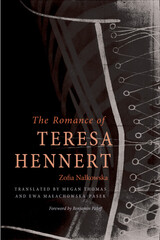 The Romance of Teresa Hennert
Zofia Nalkowska
Northern Illinois University Press, 2014 The Romance of Teresa Hennert is a masterpiece of psychological realism and a still-shocking portrait of mixed motives and bad behavior. It renders a tragicomic vision of what happens when a society is suddenly deprived of the struggle that had defined it for more than a century. Written in 1922, just four years after Poland achieved independence from its neighboring empires, the novel focuses on a Warsaw community of officers, bureaucrats, intellectuals, wives, and lovers, all of them adrift in a hell of their own making—the long-sought freedom to shape their own destiny. At the center of this milieu is Teresa Hennert, whose youthful charm, modern habits, and apparent indifference to the emotional torment of those around her make her an inescapable object of their fascination and desire.
Told in multiple voices and from numerous perspectives, Zofia Nalkowska’s novel is a mosaic of dysfunction at all levels of the new Polish society, from a bumbling lieutenant who cannot stand his home life to a young Communist who believes his forebears have made a mess that only the next generation can clean up. In this world, ideological battles, personal animosity, postwar trauma, and infidelity become inextricably bound together, driving these colorful, increasingly confused characters toward corruption, suicide, and murder. Nalkowska (1884–1954), though long neglected in the West, was a central figure in the literary life of interwar Poland and was an early pioneer of feminist fiction in Central Europe. Her spare, witty prose will surprise contemporary readers with its frank sexuality and stark illustration of dreams gone horribly, humiliatingly, dramatically awry.
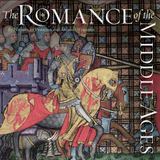 The Romance of the Middle Ages
Nicholas Perkins and Alison Wiggins
Bodleian Library Publishing, 2012 From chivalrous knights to damsels in distress, fire-breathing dragons, and high-walled towers, the characteristics and expectations we ascribe to stories of love and romance have their origins in some of the most beautiful and intriguing books of the Middle Ages. Encompassing Arthurian legends, Alexander the Great’s global conquests, sudden reversals of fortune, revenge, or enchantment, images and tales of medieval romance still resonate today. This beautifully illustrated history of romance legends explores the conjunctions of chivalric violence, love, sex, and piety that marked these striking and resonant stories.
Through a discussion of surviving manuscripts, printed books, and visual art, The Romance of the Middle Ages examines the development of romance as a literary genre, its place in medieval culture, and the scribes and readers who copied, owned, and commented on romance books—from magnificent illuminated manuscripts to personal notebooks. It describes the dangerous pull of desire in works by Dante, Chaucer, Malory, and many others, and traces the influence of these stories through their rewriting in Shakespeare, Spenser, Walter Scott, and Mark Twain, along with the medievalist visions of Morris, Rossetti, and Burne-Jones. The Romance of the Middle Ages then brings the story up to date by showing how later writers and artists have responded to medieval romance, including Tolkien, C. S. Lewis, and J. K. Rowling, and the very different knightly casts of Monty Python and Star Wars.
The Romance of the Middle Ages is an engaging analysis of stories that still have the power to capture our imaginations long after ‘happily ever after’.
Romance Of The Road: Literature Of The American Highway
Ronald Primeau
University of Wisconsin Press, 1996 For four decades, the American road narrative has been a significant and popular literary genre for expressing journeys of self discovery. These works have been used as springboards for authors to define our national identity, to explore opportunities to escape from the daily routine, and to express social protest. This comprehensive study of an important American art form examines how road narratives create dialogues between travelers, authors, and readers about who we are, what we value, and where we hope to be going.
Writers examined include Jack Kerouac, Jim Dodge, Ralph Waldo Emerson, William Least Heat Moon, Robert M. Pirsig, Henry Miller, Joan Didion, Mona Simpson, and Walt Whitman.
The Romance of Tristan and Isolt
Norman B. Spector
Northwestern University Press, 1992 The Romance of Tristan and Isolt is the tragic tale of two star-crossed lovers set in Ireland.
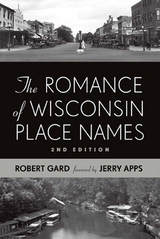 The Romance of Wisconsin Place Names
Robert E. Gard
Wisconsin Historical Society Press, 2015 “The names of places lie upon the land and tell us where we are or where we have been or where we want to go. And so much more.”—From the introduction
Fifty years ago, educator and writer Robert E. Gard traveled across Wisconsin, learning the trivial, controversial, and landmark stories behind how cities, counties, and local places got their names. This volume records the fruits of Gard’s labors in an alphabetical listing of places from every corner of Wisconsin, and the stories behind their often-unusual names. Gard’s work provides an important snapshot of how Wisconsin residents of a bygone era came to understand the names of their towns and home places, many of which can no
longer be found on any map.
Celebrated rural historian Jerry Apps introduces this reprint of Gard’s work,
saying that in “some ways The Romance of Wisconsin Place Names is a reference book, a place where you can go to learn a little more about your home town. But in many ways it is much more than that, for it includes the stories of places throughout the state, submitted by the people who knew them. It is a book where story, people, and place all come together.”
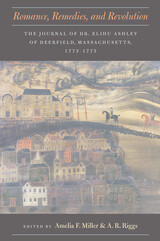 Romance, Remedies, and Revolution: The Journal of Dr. Elihu Ashley of Deerfield, Massachusetts, 1773-1775
Amelia F. Miller
University of Massachusetts Press, 2007 Elihu Ashley (1750–1817) was a twenty-three-year-old medical apprentice in Deerfield, Massachusetts, when he began keeping a personal journal in March 1773. Over the next two-and-a-half years, he recorded, in clear and simple prose, just about everything he did and everyone he saw. Although carefully preserved, the journal was later suppressed by the town historian, presumably because he found some of the entries morally objectionable. Rediscovered by Amelia F. Miller, and coedited by Miller and A. R. Riggs, this document now appears in print for the first time, accompanied by related letters of Ashley's extended family as well as brief biographies of more than 750 people mentioned by the young doctor in his writings.
With flashes of humor and close attention to detail, Ashley describes a broad range of activities and experiences in the small village of Deerfield and the surrounding towns of the Connecticut River valley. Articulate as well as observant, this former schoolteacher conveys a sense of immediacy that brings even the most mundane daily events to life. He discusses medical theory and practice, revolutionary politics, farming, his family, his circle of friends, and amusements ranging from singing and dancing to sleigh riding and bouts of drunkenness. He also writes about his love life, including a dalliance with the older sister of his fiancee, Polly Williams, while the latter is away visiting relatives in the Berkshires.
For Ashley, personal relationships and politics were the prominent issues of 1773 and 1774, as events in Massachusetts drew the province toward rebellion. He discusses the gathering of angry mobs in response to the so-called Intolerable Acts, the stoppage of the courts in Hampshire County, the anarchy that ensued, and the persecution of loyalists, with or without the sanction of law. When the revolution breaks out in April 1775, he describes the departure of companies of minutemen as they set out for Boston to challenge the British Army.
Six months later, in November 1775, the journal abruptly ends. By then, however, Elihu Ashley had already bequeathed to posterity an extraordinary firsthand account of life in rural New England in the years immediately preceding the War of Independence.
 Romances of the White Man's Burden: Race, Empire, and the Plantation in American Literature, 1880-1936
Jeremy Wells
Vanderbilt University Press, 2011 "Take up the white man's burden!" So wrote the English writer Rudyard Kipling in 1899, in a poem aimed at Americans at a time when colonial ambitions were particularly high. The poem proved especially popular among white southern men, who saw in its vision of America's imperial future an image that appeared to reflect and even redeem the South's plantation past.
Romances of the White Man's Burden takes on works in American literature in which the proverbial "old plantation" is made to seem not a relic but a harbinger, a sign that the South had arrived at a multiracial modernity and harmony before the rest of the United States. Focusing on writers such as Joel Chandler Harris, Thomas Nelson Page, Henry W. Grady, Thomas Dixon, and William Faulkner, Jeremy Wells reveals their shared fixation on the figure of the white southern man as specially burdened by history. Each of these writers, in his own way, presented the plantation South as an emblem, not an aberration, of America.
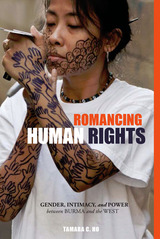 Romancing Human Rights: Gender, Intimacy, and Power between Burma and the West
Tamara C. Ho
University of Hawaii Press, 2015 Highlighting and critiquing Burma's fraught terrain, Ho’s Romancing Human Rights maps “Burmese women” as real and imagined figures across the twentieth century and into the twenty-first century. More than a recitation of “on the ground” facts, Ho’s groundbreaking scholarship—the first monograph to examine Anglophone literature and dynamics of gender and race in relation to Burma—brings a critical lens to contemporary literature, film, and politics through the use of an innovative feminist/queer methodology. She crosses intellectual boundaries to illustrate how literary and gender analysis can contribute to discourses surrounding and informing human rights—and in the process offers a new voice in the debates about representation, racialization, migration, and spirituality. Romancing Human Rights demonstrates how Burmese women break out of prisons, both real and discursive, by writing themselves into being. Ho assembles an eclectic archive that includes George Orwell, Aung San Suu Kyi, critically acclaimed authors Ma Ma Lay and Wendy Law-Yone, and activist Zoya Phan. Her close readings of literature and politicized performances by women in Burma, the Burmese diaspora, and the United States illuminate their contributions as authors, cultural mediators, and practitioner-citizens. Using flexible, polyglot rhetorical tactics and embodied performances, these authors creatively articulate alter/native epistemologies—regionally situated knowledges and decolonizing viewpoints that interrogate and destabilize competing transnational hegemonies, such as U.S. moral imperialism and Asian militarized dictatorship.
Romancing Nevada'S Past: Ghost Towns And Historic Sites Of Eureka, Lander, And White Pine Counties
Shawn Hall
University of Nevada Press, 1993 Drawing on county records, newspaper microfilm, personal interviews, and on-site investigation, Hall provides the reader with a history of 175 significant sites, rendering a treasury of interesting facts on every page. This book blends history and old photographs with an update on the present condition of each ghost town or landmark. The sites and towns are arranged alphabetically, county by county, for quick reference.
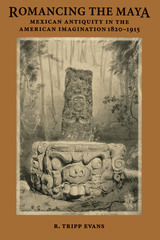 Romancing the Maya: Mexican Antiquity in the American Imagination, 1820-1915
By R. Tripp Evans
University of Texas Press, 2004 During Mexico's first century of independence, European and American explorers rediscovered its pre-Hispanic past. Finding the jungle-covered ruins of lost cities and artifacts inscribed with unintelligible hieroglyphs—and having no idea of the age, authorship, or purpose of these antiquities—amateur archaeologists, artists, photographers, and religious writers set about claiming Mexico's pre-Hispanic patrimony as a rightful part of the United States' cultural heritage. In this insightful work, Tripp Evans explores why nineteenth-century Americans felt entitled to appropriate Mexico's cultural heritage as the United States' own. He focuses in particular on five well-known figures—American writer and amateur archaeologist John Lloyd Stephens, British architect Frederick Catherwood, Joseph Smith, founder of the Church of Jesus Christ of Latter-Day Saints, and the French émigré photographers Désiré Charnay and Augustus Le Plongeon. Setting these figures in historical and cultural context, Evans uncovers their varying motives, including the Manifest Destiny-inspired desire to create a national museum of American antiquities in New York City, the attempt to identify the ancient Maya as part of the Lost Tribes of Israel (and so substantiate the Book of Mormon), and the hope of proving that ancient Mesoamerica was the cradle of North American and even Northern European civilization. Fascinating stories in themselves, these accounts of the first explorers also add an important new chapter to the early history of Mesoamerican archaeology.
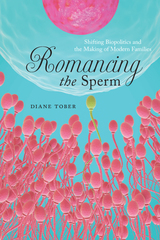 Romancing the Sperm: Shifting Biopolitics and the Making of Modern Families
Diane Tober
Rutgers University Press, 2019 The 1990s marked a new era in family formation. Increased access to donor sperm enabled single women and lesbian couples to create their families on their own terms, outside the bounds of heterosexual married relationships. However, emerging “alternative” families were not without social and political controversy. Women who chose to have children without male partners faced many challenges in their quest to have children. Despite current wider social acceptance of single people and same sex couples becoming parents, many of these challenges continue.
In Romancing the Sperm, Diane Tober explores the intersections between sperm donation and the broader social and political environment in which “modern families” are created and regulated. Through tangible and intimate stories, this book provides a captivating read for anyone interested in family and kinship, genetics and eugenics, and how ever-expanding assisted reproductive technologies continue to redefine what it means to be human.
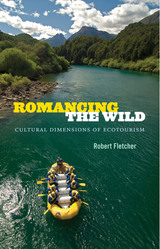 Romancing the Wild: Cultural Dimensions of Ecotourism
Robert Fletcher
Duke University Press, 2014 The worldwide development of ecotourism—including adventures such as mountain climbing and whitewater rafting, as well as more pedestrian pursuits such as birdwatching—has been extensively studied, but until now little attention has been paid to why vacationers choose to take part in what are often physically and emotionally strenuous endeavors. Drawing on ethnographic research and his own experiences working as an ecotour guide throughout the United States and Latin America, Robert Fletcher argues that participation in rigorous outdoor activities resonates with the particular cultural values of the white, upper-middle-class Westerners who are the majority of ecotourists. Navigating 13,000-foot mountain peaks or treacherous river rapids demands deferral of gratification, perseverance through suffering, and a willingness to assume risks in pursuit of continuous progress. In this way, characteristics originally cultivated for professional success have been transferred to the leisure realm at a moment when traditional avenues for achievement in the public sphere seem largely exhausted. At the same time, ecotourism provides a temporary escape from the ostensible ills of modern society by offering a transcendent "wilderness" experience that contrasts with the indoor, sedentary, mental labor characteristically performed by white-collar workers.
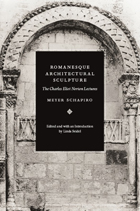 Romanesque Architectural Sculpture: The Charles Eliot Norton Lectures
Meyer Schapiro
University of Chicago Press, 2006 Meyer Schapiro (1904-96), renowned for his critical essays on nineteenth- and twentieth-century painting, also played a decisive role as a young scholar in defining the style of art and architecture known as Romanesque. And, appropriately, when he was invited to deliver the prestigious Charles Eliot Norton Lectures at Harvard, he chose Romanesque architectural sculpture as his topic. These lectures, acclaimed for the verve and freshness with which Schapiro delivered them, languished unpublished for decades. But Linda Seidel, who knew Schapiro well and attended the 1967 lectures, has now expertly transcribed and edited them, presenting them for the first time to an audience beyond the halls of Harvard.
In editing the lectures, Seidel closely followed the recordings of the originals. Sentences are rendered as Schapiro spoke them, affording readers a unique opportunity to experience the legendary teacher as he rarely appears in print: forming his thoughts spontaneously, interrupting himself to develop related ideas, and responding to the audience’s interests by introducing humorous asides. Nonetheless, these lectures are carefully constructed, demonstrating Schapiro’s commitment to the originality and value of artistic production and affirming his lifelong belief in artists’ engagement with their cultures. Amply illustrated with many key works and augmented with Seidel’s indispensable introduction, this long-awaited volume will delight students and scholars of art history, as well as anyone interested in seeing a new side of a profoundly influential mind.
Romanesque Mural Painting of Catalonia
Charles Louis Kuhn
Harvard University Press This work deals with the mural paintings of Catalonia from Early Christian times through the Romanesque period. The author has treated all the extant monuments and has devoted some space to a consideration of frescoes known only through literary sources. The first part of the book contains a detailed chronological study of the paintings; the second discusses the more general problems of technique, iconography, and the relation of Catalonian painting to that of the rest of Europe. The book contains over sixty full-page illustrations, which form a complete photographic record of the subject.
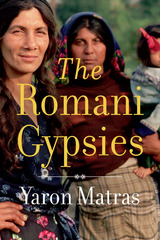 The Romani Gypsies
Yaron Matras
Harvard University Press, 2015 “Gypsies” have lived among Europeans since the Middle Ages. Yet Roms still seem exotic to Westerners, who often rely on fictional depictions for what they know, or think they know, about this much-misunderstood people. The Romani Gypsies challenges stereotypes that have long been the unwelcome travel companions of this community in Europe and the New World. Yaron Matras offers a perspective-changing account of who the Roms are, how they live today, and how they have survived over centuries.
Descendants of Indian migrants, Roms began moving into western Europe in the 1300s, refugees of a collapsing Byzantine Empire. By the 1500s they had spread throughout Europe, working as itinerant smiths and toolmakers, healers and entertainers, and would soon reach the Americas. Often described as Egyptian—hence the name Gypsies—they were ostracized as beggars, vilified as criminals, respected as artisans, and idealized as free spirits. They have been both enslaved and protected, forced to settle down and forcibly expelled, in a pattern of manipulation and persecution that persists in our own time.
Matras draws on decades of firsthand research into Romani life to explain the organization of Romani society, its shared language, history, and traditions, as well as differences among widely dispersed Romani groups. He also details the present-day dilemmas surrounding the struggle of Roms for political recognition in European countries which are, by turns, either ambivalent or openly hostile.
 Romani Liberation: A Northern Perspective on Emancipatory Struggles and Progress
Jan Selling
Central European University Press, 2022 Centered on the trajectory of the emancipation of Roma people in Scandinavia, Romani Liberation is a powerful challenge to the stereotype describing Romani as passive and incapable of responsibility and agency. The author also criticizes benevolent but paternalistic attitudes that center on Romani victimhood. The first part of the book offers a comprehensive overview of the chronological phases of Romani emancipation in Sweden and other countries. Underscoring the significance of Roma activism in this process, Jan Selling profiles sixty Romani activists and protagonists, including numerous original photos. The narrative is followed by an analysis of the concepts of historical justice and of the process of decolonizing Romani Studies. Selling highlights the impact of the historical contexts that have enabled or impeded the success of the struggles against discrimination and for equal rights, emphasizing Romani activism as a precondition for liberation. The particular Swedish framework is accentuated by a stimulating preface by the international activist Nicoleta Bitu, and afterwords by two prominent Romani advocates, the politician Soraya Post and the singer, author, and elder Hans Caldaras.
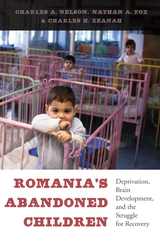 Romania’s Abandoned Children: Deprivation, Brain Development, and the Struggle for Recovery
Charles A. Nelson, Nathan A. Fox, and Charles H. Zeanah
Harvard University Press, 2014 The implications of early experience for children’s brain development, behavior, and psychological functioning have long absorbed caregivers, researchers, and clinicians. The 1989 fall of Romania’s Ceausescu regime left approximately 170,000 children in 700 overcrowded, impoverished institutions across Romania, and prompted the most comprehensive study to date on the effects of institutionalization on children’s wellbeing. Romania’s Abandoned Children, the authoritative account of this landmark study, documents the devastating toll paid by children who are deprived of responsive care, social interaction, stimulation, and psychological comfort.
Launched in 2000, the Bucharest Early Intervention Project (BEIP) was a rigorously controlled investigation of foster care as an alternative to institutionalization. Researchers included 136 abandoned infants and toddlers in the study and randomly assigned half of them to foster care created specifically for the project. The other half stayed in Romanian institutions, where conditions remained substandard. Over a twelve-year span, both groups were assessed for physical growth, cognitive functioning, brain development, and social behavior. Data from a third group of children raised by their birth families were collected for comparison.
The study found that the institutionalized children were severely impaired in IQ and manifested a variety of social and emotional disorders, as well as changes in brain development. However, the earlier an institutionalized child was placed into foster care, the better the recovery. Combining scientific, historical, and personal narratives in a gripping, often heartbreaking, account, Romania’s Abandoned Children highlights the urgency of efforts to help the millions of parentless children living in institutions throughout the world.
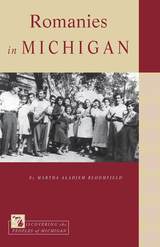 Romanies in Michigan
Martha Aladjem Bloomfield
Michigan State University Press, 2019 This groundbreaking book relates the oral histories of Romanies in the United States. It focuses on the Hungarian-Slovak Romani musical community originally from Delray, Michigan, as well as others from outlying areas in and near Michigan. Originally Romanies came from India and hundreds of years ago traveled to Europe, Latin America, the United States, and, eventually, Michigan. Their stories provide a different voice from the stereotypical, bigoted newspaper articles from Michigan newspapers in the late nineteenth century through today that reflect law enforcement agencies’ prejudices or “racial profiling.” Romanies in Michigan introduces their diverse, rich, resilient history in Michigan, based on oral histories, photographs, newspaper articles, legal documents, and other research. The book explores traditional modes of travel; Romanies’ identity, history, perspective, and challenges with non-Romanies; their feelings as a minority group; and their self-efficacy, respect, and pride in their culture and work.
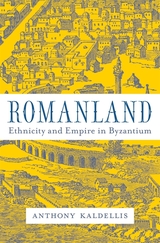 Romanland: Ethnicity and Empire in Byzantium
Anthony Kaldellis
Harvard University Press, 2019 A leading historian argues that in the empire we know as Byzantium, the Greek-speaking population was actually Roman, and scholars have deliberately mislabeled their ethnicity for the past two centuries for political reasons.
Was there ever such a thing as Byzantium? Certainly no emperor ever called himself “Byzantine.” And while the identities of minorities in the eastern empire are clear—contemporaries speak of Slavs, Bulgarians, Armenians, Jews, and Muslims—that of the ruling majority remains obscured behind a name made up by later generations.
Historical evidence tells us unequivocally that Byzantium’s ethnic majority, no less than the ruler of Constantinople, would have identified as Roman. It was an identity so strong in the eastern empire that even the conquering Ottomans would eventually adopt it. But Western scholarship has a long tradition of denying the Romanness of Byzantium. In Romanland, Anthony Kaldellis investigates why and argues that it is time for the Romanness of these so-called Byzantines to be taken seriously.
In the Middle Ages, he explains, people of the eastern empire were labeled “Greeks,” and by the nineteenth century they were shorn of their distorted Greekness and became “Byzantine.” Only when we understand that the Greek-speaking population of Byzantium was actually Roman will we fully appreciate the nature of Roman ethnic identity. We will also better understand the processes of assimilation that led to the absorption of foreign and minority groups into the dominant ethnic group, the Romans who presided over the vast multiethnic empire of the east.
 The Romanov Empire and Nationalism: Essays in the Methodology of Historical Research
Alexei Miller
Central European University Press, 2008 Miller addresses the fabric of interaction between the imperial authority and local communities in the Romanov empire. How did the authorities structure the space of the empire? What were the economic relations between the borderlands and the center? How was the use of different languages regulated? How did the central authorities and local officials implement policies regarding different population groups? How did the experience, acquired in particular borderlands, influence the policies elsewhere —among others—through officials who often changed their place of service during their careers? How did the local elites and communities react to the policies of the imperial authorities? How did they uphold their special interests if the empire encroached on them, but also—how did they collaborate with the empire and how did they use imperial resources for local interests?
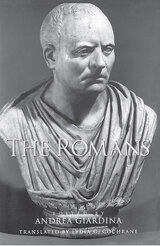 The Romans
Edited by Andrea Giardina
University of Chicago Press, 1993 In this book, third in a series which includes Jacques Le Goff's Medieval Characters and Eugenio Garin's Renaissance Portraits, leading scholars search for the character of the ancient Romans through portraits of Rome's most typical personages. Essays on the politician, the soldier, the priest, the farmer, the slave, the merchant, and others together create a fresco of Roman society as it spanned 1300 years.
Synthesizing a wealth of current research, The Romans surveys the most complex society ever to exist prior to the Industrial Age. Searching out the identity of the ancient Roman, the contributors describe an urbane figure at odds with his rustic peers, known for his warlike nature and his love of virtue, his magnanimity to foreigners and his predilection for cutting off his enemies' heads. Most important, perhaps, of the themes explored throughout this volume are those of freedom and slavery, of citizenship and humanitas.
What results from the depictions Roman society through time and across its many constituent cultures is the variety of Roman identity in all its richness and depth. These masterful essays will engage the general reader as well as the specialist in history and culture.
Romans and Barbarians: The Decline of the Western Empire
E. A. Thompson
University of Wisconsin Press, 2002 The Fall of the Roman Empire—from the barbarian's perspective
Available for the first time in paperback, this classic work by renowned historian E.A. Thompson examines the fall of the Roman Empire in the West from the barbarian perspective and experience. Standard interpretations of the decline of the Roman Empire in the West view the barbarian invaders as destroyers. Thompson, however, argues that the relationship between the invaders and the invaded was far more complex than the common interpretation would suggest. This edition includes a new foreword by F.M. Clover and J.H.W.G. Liebeschuetz.
 Romans and the Power of the Believer
Richard J. Britton
SBL Press, 2022 Richard J. Britton uses the critical theory of Jacques Derrida, Giorgio Agamben, and others to examine the financial, gift, and olive tree metaphors of Paul’s Letter to the Romans. Drawing upon papyri about money, gifts, and friendship, Greek and Roman farming handbooks, and later sources, including the Book of Mormon and writings from colonized places, Britton questions the way some people understand faith, grace, and identity in the New Testament and beyond. Britton asserts that the believer is not a passive recipient of God’s grace and righteousness but rather an interpreter, reader, and decision maker actively involved in reciprocal exchange and enhancement of God’s eschatological and soteriological project. Believers, he concludes, negotiate meaning through their own interaction with texts and traditions in combination with their own personal relationship with the divine and the world. Turning to the contemporary world, Britton contends that, if we want to upend the oppression of established religion and ideology, we must first appreciate the believer as a powerful and responsible agent within God’s cosmic project.
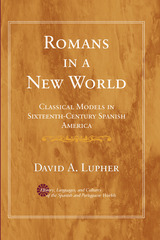 Romans in a New World: Classical Models in Sixteenth-Century Spanish America
David A. Lupher
University of Michigan Press, 2006 Romans in a New World shows how the ancient Romans haunted the Spanish conquest of the New World, more often than not as passionately rejected models. While the conquistadors themselves and their publicists challenged the reputations of the Romans for incomparable military genius and daring, Spanish critics of the conquest launched a concerted assault upon two other prominent uses of ancient Rome as a model: as an exemplar of imperialistic motives and behavior fit for Christians to follow, and as a yardstick against which to measure the cultural level of the natives of the New World.
In the course of this debate, many Spaniards were inspired to think more deeply on their own ethnic ancestry and identity, as Spanish treatment of the New World natives awakened the slumbering memory of Roman treatment of the Iberian tribes whom modern Spaniards were now embracing as their truest ancestors. At the same time, growing awareness of the cultural practices--especially the religious rituals--of the American natives framed a new perspective on both the pre-Christian ancestors of modern Europeans and even on the survival of "pagan" customs among modern Europeans themselves. In this incisive study, David A. Lupher addresses the increasingly debated question of the impact the discovery of the New World had upon Europeans' perceptions of their identity and place in history.
Romans in a New World holds much to interest both classicists and students of the history and culture of early modern Europe--especially, though not exclusively, historians of Spain. David A. Lupher's concern with the ideology of imperialism and colonization and with cross-cultural negotiations will be useful to students of cultural studies, as well.
David A. Lupher is Professor of Classics, University of Puget Sound.
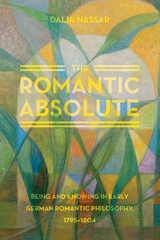 The Romantic Absolute: Being and Knowing in Early German Romantic Philosophy, 1795-1804
Dalia Nassar
University of Chicago Press, 2013 The absolute was one of the most significant philosophical concepts in the early nineteenth century, particularly for the German romantics. Its exact meaning and its role within philosophical romanticism remain, however, a highly contested topic among contemporary scholars. In The Romantic Absolute, Dalia Nassar offers an illuminating new assessment of the romantics and their understanding of the absolute. In doing so, she fills an important gap in the history of philosophy, especially with respect to the crucial period between Kant and Hegel.
Scholars today interpret philosophical romanticism along two competing lines: one emphasizes the romantics’ concern with epistemology, the other their concern with metaphysics. Through careful textual analysis and systematic reconstruction of the work of three major romantics—Novalis, Friedrich Schlegel, and Friedrich Schelling—Nassar shows that neither interpretation is fully satisfying. Rather, she argues, one needs to approach the absolute from both perspectives. Rescuing these philosophers from frequent misunderstanding, and even dismissal, she articulates not only a new angle on the philosophical foundations of romanticism but on the meaning and significance of the notion of the absolute itself.
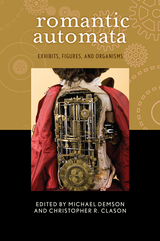 Romantic Automata: Exhibitions, Figures, Organisms
Michael Demson
Bucknell University Press, 2020 For most of the eighteenth century, automata were deemed a celebration of human ingenuity, feats of science and reason. Among the Romantics, however, they prompted a contradictory apprehension about mechanization and contrivance: such science and engineering threatened the spiritual nature of life, the source of compassion in human society. A deep dread of puppets and the machinery that propels them consequently surfaced in late eighteenth and early nineteenth century literature. Romantic Automata is a collection of essays examining the rise of this cultural suspicion of mechanical imitations of life.
Recent scholarship in post-humanism, post-colonialism, disability studies, post-modern feminism, eco-criticism, and radical Orientalism has significantly affected the critical discourse on this topic. In engaging with the work and thought of Coleridge, Poe, Hoffmann, Mary Shelley, and other Romantic luminaries, the contributors to this collection open new methodological approaches to understanding human interaction with technology that strives to simulate, supplement, or supplant organic life.
Published by Bucknell University Press. Distributed worldwide by Rutgers University Press.
 Romantic Beasts: Pervasion, Eccentricity, Exhibition
Michael Demson
Bucknell University Press, 2025 By staging human-animal encounters, Romantic literature and art repeatedly questioned how "human" animals could be and how "animal" humans in fact are. Romantic-era authors and artists often depicted perplexing animal intrusions upon humans. Sometimes the intruders were mystifying or terrifying, like Coleridge’s albatross or Poe’s raven; sometimes they were mundane, as in “The Swallow” by Smith or “To a Mouse” by Burns—regardless, encounters with animal-others occasioned Romantic musings. This collection builds on existing scholarship while deploying new methodological approaches from gender studies, posthumanism, postcolonialism, disability studies, and digital studies to deepen our understanding of why animal-human encounters were so prevalent in the creative work and cultural discourse of the Romantic period, including the rhetoric of social movements like transatlantic abolitionism. Taken together, the chapters demonstrate the range and complexity of Romantic representations of human-animal interactions and conceptualizations of animality, nonhuman life, and not-wholly-human life.
Published by Bucknell University Press. Distributed worldwide by Rutgers University Press.
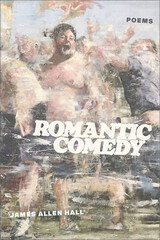 Romantic Comedy
James Allen Hall
Four Way Books, 2023 James Allen Hall returns to poetry with Romantic Comedy, a sophomore collection sounding the parameters of genre to subvert cultural notions of literary value and artistic legitimacy. What realities do stories authorize, and which remain untold? “This story,” they profess in “Biography,” “is mine: there was / a wound, then a world.” Rather than playing into the attention economy’s appetite for sensationalism, Hall’s poems resist the formulaic while paying homage to the oeuvre, a formal balancing act that celebrates queer life.The poems create liberatory narratives that break constraints or speak through them. Hall parses music from the blizzard — as when “one year / [they] watched the snow / pile to [their] door / all December, all / January,” “the year [they] wanted / to die,” and, faced with winter’s architecture, “learned / another song. Sang / another way.” Whether grieving the death of their father, documenting the survival of sexual assault, interrogating the scripts of addiction, or revisiting an ’80s crime thriller, Hall’s second collection constantly affirms the ingenuity of self-definition as a technology of survival.
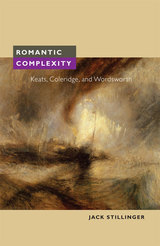 Romantic Complexity: Keats, Coleridge, and Wordsworth
Jack Stillinger
University of Illinois Press, 2005 In Romantic Complexity, Jack Stillinger examines three of the most admired poets of English Romanticism--Keats, Coleridge, and Wordsworth--with a focus on the complexity that results from the multiple authorship, the multiple textual representation, and the multiple reading and interpretation of their best works. Specific topics include the joint authorship of Wordsworth and Coleridge in the Lyrical Ballads, an experiment of 1798 that established the most essential characteristics of modern poetry; Coleridge's creation of eighteen or more different versions of The Ancient Mariner and how this textual multiplicity affects interpretation; the historical collaboration between Keats and his readers to produce fifty-nine separate but entirely legitimate readings of The Eve of St. Agnes; and a number of practical and theoretical matters bearing on the relationships among these writers and their influences on one another. Stillinger shows his deep understanding of the poets' lives, works, and the history of their reception, in chapters rich with intriguing questions and answers sure to engage students and teachers of the world's greatest poetry.
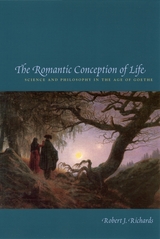 The Romantic Conception of Life: Science and Philosophy in the Age of Goethe
Robert J. Richards
University of Chicago Press, 2002 "All art should become science and all science art; poetry and philosophy should be made one." Friedrich Schlegel's words perfectly capture the project of the German Romantics, who believed that the aesthetic approaches of art and literature could reveal patterns and meaning in nature that couldn't be uncovered through rationalistic philosophy and science alone. In this wide-ranging work, Robert J. Richards shows how the Romantic conception of the world influenced (and was influenced by) both the lives of the people who held it and the development of nineteenth-century science.
Integrating Romantic literature, science, and philosophy with an intimate knowledge of the individuals involved—from Goethe and the brothers Schlegel to Humboldt and Friedrich and Caroline Schelling—Richards demonstrates how their tempestuous lives shaped their ideas as profoundly as their intellectual and cultural heritage. He focuses especially on how Romantic concepts of the self, as well as aesthetic and moral considerations—all tempered by personal relationships—altered scientific representations of nature. Although historians have long considered Romanticism at best a minor tributary to scientific thought, Richards moves it to the center of the main currents of nineteenth-century biology, culminating in the conception of nature that underlies Darwin's evolutionary theory.
Uniting the personal and poetic aspects of philosophy and science in a way that the German Romantics themselves would have honored, The Romantic Conception of Life alters how we look at Romanticism and nineteenth-century biology.
Romantic Conventions
Anne K. Kaler
University of Wisconsin Press, 1999 Traditionally, romance novels have a reputation as being no more than trashy, sex-filled fantasy escapes for frustrated housewives. But books in this genre account for nearly half of the paperbacks published. Contributors examine the patterns used by the romance authors to tell their stories.
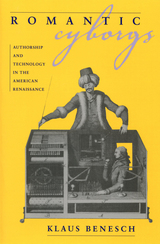 Romantic Cyborgs: Authorship and Technology in the American Renaissance
Klaus Benesch
University of Massachusetts Press Literary critics have long regarded the rejection of technology as a distinguishing feature of American Romanticism. Yet as Klaus Benesch shows in this insightful study, the attitude of antebellum writers toward the advent of the machine age was far more complicated than often supposed. Although fraught with tension, the relationship between professional authorship and evolving technology reflected a pattern of adjustment rather than opposition, as writers sought to redefine their place within a culture that increasingly valued the engineer and the scientist. According to Benesch, major writers such as Emerson, Hawthorne, Melville, Poe, Whitman, and Rebecca Harding Davis recognized technology as a powerful engine of social change—a driving force that threatened to subordinate their creative faculties to the inexorable dictates of industrial production. In response, they conjured up "cybernetic" self-representations that attempted to preserve the autonomy of the individual author in the face of ongoing technological encroachment. These biomechanical images helped writers construct a hybrid identity that reconciled new modes of technological production with older, more organic models of professional writing. In the end, Benesch argues, Romantic literary discourse is marked as much by admiration for the technological as by strains of resentment and cultural anxiety about its negative effects. As such, it prefigures in important and previously unacknowledged ways the modernist and postmodernist sensibilities that would follow.
 The Romantic Generation
Charles Rosen
Harvard University Press, 1995 “A magnum opus.”—George Steiner, New Yorker
“Grippingly, even excitingly, readable.”—Edward Said, London Review of Books
What Charles Rosen’s National Book Award–winning The Classical Style did for the music of the Classical period, this volume brilliantly does for the Romantic Era. An exhilarating exploration of the musical language, forms, and styles of the Romantic period, it captures the spirit that enlivened a generation of composers and musicians, and in doing so it conveys the very sense of Romantic music. In readings uniquely informed by his performing experience, Rosen offers consistently acute and thoroughly engaging analyses of works by Schubert, Schumann, Mendelssohn, Bellini, Liszt, and Berlioz, and he presents a new view of Chopin as a master of polyphony and large-scale form. He adeptly integrates his observations on the music with reflections on the art, literature, drama, and philosophy of the time, and thus shows us the major figures of Romantic music within their intellectual and cultural context.
Rosen covers a remarkably broad range of music history and considers the importance to nineteenth-century music of other cultural developments: the art of landscape, a changed approach to the sacred, the literary fragment as a Romantic art form. He sheds new light on the musical sensibilities of each composer, studies the important genres from nocturnes and songs to symphonies and operas, explains musical principles such as the relation between a musical idea and its realization in sound and the interplay between music and text, and traces the origins of musical ideas prevalent in the Romantic period. Rich with striking descriptions and telling analogies, Rosen's overview of Romantic music is an accomplishment without parallel in the literature, a consummate performance by a master pianist and music historian.
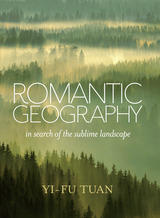 Romantic Geography: In Search of the Sublime Landscape
Yi-Fu Tuan
University of Wisconsin Press, 2013 Geography is useful, indeed necessary, to survival. Everyone must know where to find food, water, and a place of rest, and, in the modern world, all must make an effort to make the Earth—our home—habitable. But much present-day geography lacks drama, with its maps and statistics, descriptions and analysis, but no acts of chivalry, no sense of quest. Not long ago, however, geography was romantic. Heroic explorers ventured to forbidding environments—oceans, mountains, forests, caves, deserts, polar ice caps—to test their power of endurance for reasons they couldn't fully articulate. Why climb Everest? "Because it is there." Yi-Fu Tuan has established a global reputation for deepening the field of geography by examining its moral, universal, philosophical, and poetic potentials and implications. In his twenty-second book, Romantic Geography, he continues to engage the wide-ranging ideas that have made him one of the most influential geographers of our time. In this elegant meditation, he considers the human tendency—stronger in some cultures than in others—to veer away from the middle ground of common sense to embrace the polarized values of light and darkness, high and low, chaos and form, mind and body. In so doing, venturesome humans can find salvation in geographies that cater not so much to survival needs (or even to good, comfortable living) as to the passionate and romantic aspirations of their nature. Romantic Geography is thus a paean to the human spirit, which can lift us to the heights but also plunge us into the abyss.
 Romantic Globalism: British Literature and Modern World Order, 1750–1830
Evan Gottlieb
Ohio State University Press, 2014 Romantic Globalism: British Literature and Modern World Order, 1750–1830 explores how British literature of the late eighteenth century and Romantic era both reflects and inflects the increasingly global world in which it was produced and consumed. Building on recent work in globalization studies, cosmopolitanism, and critical theory, Evan Gottlieb investigates the ways in which, following the economic and historiographical writings of the Scottish Enlightenment, a number of influential Romantic-era authors began representing, mediating, and even critiquing their experiences of globalization in poetry, fiction, and drama.
Although modern media tend to represent globalization as an essentially contemporary phenomenon, many scholars now agree that its fundamental dynamics—especially its characteristic annulment of spatial and temporal differences—have been present for several centuries. Moreover, the last decades of the eighteenth century and the first of the nineteenth century saw the convergence of a number of world-changing socio-political developments in the Western world. Romantic Globalism is significant because it is the first extended scholarly study that brings together these lines of inquiry. In so doing, Romantic Globalism not only charts a new course of study for British Romanticism but also suggests how the Romantics’ visions of globality might still be valuable to us today.
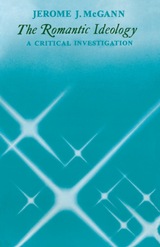 The Romantic Ideology: A Critical Investigation
Jerome McGann
University of Chicago Press, 1983 Claiming that the scholarship and criticism of Romanticism and its works have for too long been dominated by a Romantic ideology—by an uncritical absorption in Romanticism's own self-representations—Jerome J. McGann presents a new, critical view of the subject that calls for a radically revisionary reading of Romanticism.
In the course of his study, McGann analyzes both the predominant theories of Romanticism (those deriving from Coleridge, Hegel, and Heine) and the products of its major English practitioners. Words worth, Coleridge, Shelley, and Byron are considered in greatest depth, but the entire movement is subjected to a searching critique. Arguing that poetry is produced and reproduced within concrete historical contexts and that criticism must take these contexts into account, McGann shows how the ideologies embodied in Romantic poetry and theory have shaped and distorted contemporary critical activities.
 The Romantic Imperative: The Concept of Early German Romanticism
Frederick C. Beiser
Harvard University Press, 2003 The Early Romantics met resistance from artists and academics alike in part because they defied the conventional wisdom that philosophy and the arts must be kept separate. Indeed, as the literary component of Romanticism has been studied and celebrated in recent years, its philosophical aspect has receded from view. This book, by one of the most respected scholars of the Romantic era, offers an explanation of Romanticism that not only restores but enhances understanding of the movement's origins, development, aims, and accomplishments--and of its continuing relevance.
Poetry is in fact the general ideal of the Romantics, Frederick Beiser tells us, but only if poetry is understood not just narrowly as poems but more broadly as things made by humans. Seen in this way, poetry becomes a revolutionary ideal that demanded--and still demands--that we transform not only literature and criticism but all the arts and sciences, that we break down the barriers between art and life, so that the world itself becomes "romanticized." Romanticism, in the view Beiser opens to us, does not conform to the contemporary division of labor in our universities and colleges; it requires a multifaceted approach of just the sort outlined in this book.
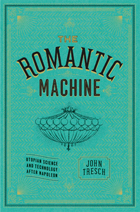 The Romantic Machine: Utopian Science and Technology after Napoleon
John Tresch
University of Chicago Press, 2012 In the years immediately following Napoleon’s defeat, French thinkers in all fields set their minds to the problem of how to recover from the long upheavals that had been set into motion by the French Revolution. Many challenged the Enlightenment’s emphasis on mechanics and questioned the rising power of machines, seeking a return to the organic unity of an earlier age and triggering the artistic and philosophical movement of romanticism. Previous scholars have viewed romanticism and industrialization in opposition, but in this groundbreaking volume John Tresch reveals how thoroughly entwined science and the arts were in early nineteenth-century France and how they worked together to unite a fractured society.
Focusing on a set of celebrated technologies, including steam engines, electromagnetic and geophysical instruments, early photography, and mass-scale printing, Tresch looks at how new conceptions of energy, instrumentality, and association fueled such diverse developments as fantastic literature, popular astronomy, grand opera, positivism, utopian socialism, and the Revolution of 1848. He shows that those who attempted to fuse organicism and mechanism in various ways, including Alexander von Humboldt and Auguste Comte, charted a road not taken that resonates today.
Essential reading for historians of science, intellectual and cultural historians of Europe, and literary and art historians, The Romantic Machine is poised to profoundly alter our understanding of the scientific and cultural landscape of the early nineteenth century.
Romantic Motives: Essays on Anthropological Sensibility
Edited by George W. Stocking, Jr.
University of Wisconsin Press, 1996 Romantic Motives explores a topic that has been underemphasized in the historiography of anthropology. Tracking the Romantic strains in the the writings of Rousseau, Herder, Cushing, Sapir, Benedict, Redfield, Mead, Lévi-Strauss, and others, these essays show Romanticism as a permanent and recurrent tendency within the anthropological tradition.
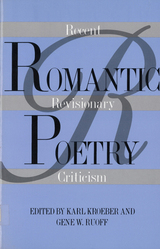 Romantic Poetry: Recent Revisionary Criticism
Kroeber, Karl
Rutgers University Press, 1993 This anthology fills the need for a comprehensive, up-to-date collection of the most important contemporary writings on the English romantic poets. During the 1980s, many theoretical innovations in literary study swept academic criticism. Many of these approaches--from deconstructive, new historicist, and feminist perspectives--used romantic texts as primary examples and altered radically the ways in which we read. Other major changes have occurred in textual studies, dramatically transforming the works of these poets. The world of English romantic poetry has certainly changed, and Romantic Poetry keeps pace with those changes. Karl Kroeber and Gene W. Ruoff have organized the book by poet--Blake, Wordsworth, Coleridge, Byron, Shelly, and Keats--and have included essays representative of key critical approaches to each poet's work. In addition to their excellent general introduction, the editors have provided brief, helpful forewords to each essay, showing how it reflects current approaches to its subject. The book also has an extensive bibliography sure to serve as an important research aid. Students on all levels will find this book invaluable.
 Romantic Poets, Critics, and Other Madmen
Charles Rosen
Harvard University Press, 1998 Few can match Charles Rosen's cultivation and discernment, whether as pianist, music historian, or critic. Here he gives us a performance of literary criticism as high art, a critical conjuring of the Romantic period by way of some of its central texts.
"What is the real business of the critic?" Rosen asks of George Bernard Shaw in one of his essays. It is a question he answers throughout this collection as he demonstrates and analyzes various critical approaches. In writing about the Romantic poets Lord Byron, William Wordsworth, William Cowper, and Friedrich Hölderlin, he examines the kind of criticism which attempts to uncover concealed code. He investigates the relationship between Romantic aesthetic theory and artworks, and explores the way Romantic art criticism has been practiced by critics from Friedrich Schlegel to Walter Benjamin. In essays on Honoré de Balzac, Robert Schumann, Gustave Flaubert, and others, he highlights the intersections between Romantic art and music; the artist's separation of life and artistic representations of it; and the significance of the established text.
With an apt comparison or a startling juxtaposition, Rosen opens whole worlds of insight, as in his linking of Caspar David Friedrich's landscape painting and Schumann's music, or in his review of the theory and musicology of Heinrich Schenker alongside the work of Roman Jakobson.
Throughout this volume we hear the voice of a shrewd aesthetic interpreter, performing the critic's task even as he redefines it in his sparkling fashion.
 Romantic Rebels: Essays on Shelley and His Circle
Kenneth Neill Cameron
Harvard University Press, 1973 The rebels of the Romantic period speak more directly to the issues of today than any other group of writers of the past. Mary Wollstonecraft exposed the problem of women's rights; her husband William Godwin protested against war, economic and social imbalances, and cruel penal practices; their daughter Mary Shelley produced the original science fiction, Frankenstein, and introduced into the novel radical social and antireligious views. Shelley campaigned in Ireland for Irish separation, wrote pamphlets on parliamentary reform, and propounded an egalitarian world; Byron addressed himself to problems of social injustice and lost his life as a result of his participation in the Greek war of independence. Leigh Hunt, the first radical, crusading journalist, battled all forms of injustice from child labor to army flogging; Thomas Love Peacock's lively, satiric novels excoriated sham.
Their rebellion carried into their personal lives: Mary Wollstonecraft, Shelley, and Byron openly flouted the laws of marital relations, and several adopted unconventional dress. The rebels paid dearly for their public and private views. Shelley was deprived of his children, Byron was driven into exile, and Leigh Hunt was imprisoned.
The lives and works of these major Romantics are sketched in a concise and lively way in these twelve essays, which are derived from Shelley and His Circle, Volumes I through IV. The collection provides a cohesive picture of some of the Romantics whose lives interlocked in the early 1800's.
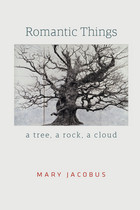 Romantic Things: A Tree, a Rock, a Cloud
Mary Jacobus
University of Chicago Press, 2012 Our thoughts are shaped as much by what things make of us as by what we make of them. Lyric poetry is especially concerned with things and their relationship to thought, sense, and understanding. In Romantic Things, Mary Jacobus explores the world of objects and phenomena in nature as expressed in Romantic poetry alongside the theme of sentience and sensory deprivation in literature and art. Jacobus discusses objects and attributes that test our perceptions and preoccupy both Romantic poetry and modern philosophy. John Clare, John Constable, Rainer Maria Rilke, W. G. Sebald, and Gerhard Richter make appearances around the central figure of William Wordsworth as Jacobus explores trees, rocks, clouds, breath, sleep, deafness, and blindness in their work. While she thinks through these things, she is assisted by the writings of Maurice Merleau-Ponty, Jacques Derrida, and Jean-Luc Nancy. Helping us think more deeply about things that are at once visible and invisible, seen and unseen, felt and unfeeling, Romantic Things opens our eyes to what has been previously overlooked in lyric and Romantic poetry.
 A Romantic View of Poetry: Being Lectures Given at the Johns Hopkins University on the Percy Turnbull Memorial Foundation in November 1941
Joseph Warren Beach
University of Minnesota Press, 1944
A Romantic View of Poetry was first published in 1944. Minnesota Archive Editions uses digital technology to make long-unavailable books once again accessible, and are published unaltered from the original University of Minnesota Press editions.
Poetry is of the very essence of living. In this belief Joseph Warren Beach discusses the ways in which poet and reader create and live "a being more intense" and thereby fulfill the function of poetry. "Wherever there is life," says Beach, "there poetry is present potentially and in its rudiments . . . and poetry, as I conceive it, is the sovereign means we have of realizing the satisfaction which we take in living."
Against the background of the Romantic School, he develops a pattern for the understanding of poetry that applies to all schools and to all readers. Poetry of realization and release cannot be circumscribed. Wordsworth, Coleridge, Byron, Keats, and Shelley stand here as examples of the poetic artist. And every person who responds to the work of the poet shares with him the imaginative stimulus of poetic creation.
A Romantic View of Poetry consists of a series of lectures delivered by Mr. Beach at the Johns Hopkins University in 1941 on the Percy Turnball Memorial Foundation.
Romantic Vision, Ethical Context: Novalis and Artistic Autonomy
Geza Molnar
University of Minnesota Press, 1987 Exploring the full range of Novalis's (the pen name of the German poet and philosopher Friedrich von Hardenberg) work, von Molnar shows how he dealt, in theory and practice, with a central issue in Romanticism-the emerging concept of the autonomous self and its relation.
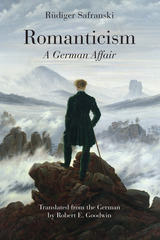 Romanticism: A German Affair
Rüdiger Safranski Translated from the German by Robert E. Goodwin
Northwestern University Press, 2014 The renowned scholar Rüdiger Safranski’s Romanticism: A German Affair both offers an accessible overview of Romanticism and, more critically, traces its lasting influence, for better and for ill, on German culture. Safranski begins with the eighteenthcentury Sturm und Drang movement, which would sow the seeds for Romanticism in Germany. While Romanticism was a broad artistic, literary, and intellectual movement, German thinkers were especially concerned with its strong philosophical-metaphysical and religious dimension. Safranski follows this spirit in its afterlife in the work of Heinrich Heine, Richard Wagner, Friedrich Nietzsche, Thomas Mann, and through the later artistic upheavals of the twentieth century. He concludes by carefully considering Romanticism’s possible influence in the rise of National Socialism and the student revolt of 1968. Romanticism: A German Affair is essential reading for anyone interested in the power of art, culture, and ideas in the life of a nation.
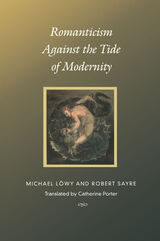 Romanticism Against the Tide of Modernity
Michael Löwy and Robert Sayre
Duke University Press, 2001 Romanticism is a worldview that finds expression over a whole range of cultural fields—not only in literature and art but in philosophy, theology, political theory, and social movements. In Romanticism Against the Tide of Modernity Michael Löwy and Robert Sayre formulate a theory that defines romanticism as a cultural protest against modern bourgeois industrial civilization and work to reveal the unity that underlies the extraordinary diversity of romanticism from the eighteenth to the twenty-first century.
After critiquing previous conceptions of romanticism and discussing its first European manifestations, Löwy and Sayre propose a typology of the sociopolitical positions held by romantic writers-from “restitutionist” to various revolutionary/utopian forms. In subsequent chapters, they give extended treatment to writers as diverse as Coleridge and Ruskin, Charles Peguy, Ernst Bloch and Christa Wolf. Among other topics, they discuss the complex relationship between Marxism and romanticism before closing with a reflection on more contemporary manifestations of romanticism (for example, surrealism, the events of May 1968, and the ecological movement) as well as its future.
Students and scholars of literature, humanities, social sciences, and cultural studies will be interested in this elegant and thoroughly original book.
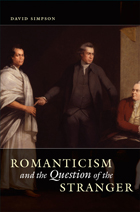 Romanticism and the Question of the Stranger
David Simpson
University of Chicago Press, 2012 In our post-9/11 world, the figure of the stranger—the foreigner, the enemy, the unknown visitor—carries a particular urgency, and the force of language used to describe those who are “different” has become particularly strong. But arguments about the stranger are not unique to our time. In Romanticism and the Question of the Stranger, David Simpson locates the figure of the stranger and the rhetoric of strangeness in romanticism and places them in a tradition that extends from antiquity to today. Simpson shows that debates about strangers loomed large in the French Republic of the 1790s, resulting in heated discourse that weighed who was to be welcomed and who was to be proscribed as dangerous. Placing this debate in the context of classical, biblical, and other later writings, he identifies a persistent difficulty in controlling the play between the despised and the desired. He examines the stranger as found in the works of Coleridge, Austen, Scott, and Southey, as well as in depictions of the betrayals of hospitality in the literature of slavery and exploration—as in Mungo Park's Travels and Stedman's Narrative—and portrayals of strange women in de Staël, Rousseau, and Burney. Contributing to a rich strain of thinking about the stranger that includes interventions by Ricoeur and Derrida, Romanticism and the Question of the Stranger reveals the complex history of encounters with alien figures and our continued struggles with romantic concerns about the unknown.
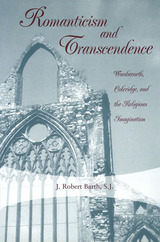 Romanticism and Transcendence: Wordsworth, Coleridge, and the Religious Imagination
J. Robert Barth, S.J.
University of Missouri Press, 2003
Grounded in the thought of Samuel Taylor Coleridge, Romanticism and Transcendence explores the religious dimensions of imagination in the Romantic tradition, both theoretically and in the poetry of Wordsworth and Coleridge. J. Robert Barth suggests that we may look to Coleridge for the theoretical grounding of the view of religious imagination proposed in this book, but that it is in Wordsworth above all that we see this imagination at work.
Barth first argues that the Romantic imagination—with its profound symbolic import—of its very nature has religious implications, and notes parallels between Coleridge’s view of the imagination and that of Ignatius Loyola in his Spiritual Exercises. He then turns to the role of religious experience in Wordsworth, using The Prelude as a privileged source. Next, after comparing the conception of humanity and God in Wordsworth and Coleridge, Barth considers the role of religious experience and imagery in two of Coleridge’s central poetic texts, The Rime of the Ancient Mariner and Christabel. Finally, Barth examines the continuing role of the Romantic idea of the religious imagination today, in literature and all the arts, linking it with the thought of theologian Karl Rahner and literary critic George Steiner.
Romanticism and Transcendence brings together literary theory, poetry, and religious experience, areas that are interrelated but are often not seen in relationship. By exploring levels of Wordsworth’s and Coleridge’s poetry that are often ignored, Barth provides insight into how and why the imagination was so important to their work. He also demonstrates how rich with religious value and meaning poetry and the arts can be.
The interdisciplinary nature of this important new study will make it useful not only to Wordsworth and Coleridge scholars and other Romantic specialists, but also to anyone concerned with the intellectual history of the nineteenth century and to theologians in general.
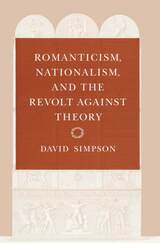 Romanticism, Nationalism, and the Revolt against Theory
David Simpson
University of Chicago Press, 1993 Why has Anglo-American culture for so long regarded "theory" with intense suspicion? In this important contribution to the history of critical theory, David Simpson argues that a nationalist myth underlies contemporary attacks on theory. Theory's antagonists, Simpson shows, invoke the same criteria of common sense and national solidarity as did the British intellectuals who rebelled against "theory" and "method" during the French Revolution.
Simpson demonstrates the close association between "theory" and "method" and shows that by the mid-eighteenth century, "method" had acquired distinctly subversive associations in England. Attributed increasingly to the French and the Germans, "method" paradoxically evoked images both of inhuman rationality and unbridled sentimentality; in either incarnation, it was seen as a threat to what was claimed to be authentically British. Simpson develops these paradigms in relation to feminism, the gendering of Anglo-American culture, and the emergence of literature and literary criticism as antitheoretical discourses. He then looks at the Romantic poets' response to this confining ideology of the cultural role of literature. Finally, Simpson considers postmodern theory's claims for the radical energy of nonrational or antirationalist positions.
This is an essential book not only for students of the Romantic period and intellectual historians concerned with the idea of "method," but for anyone interested in the historical background of today's debates over the excesses and possibilities of "theory."
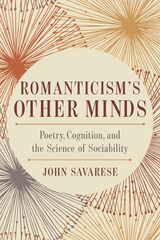 Romanticism’s Other Minds: Poetry, Cognition, and the Science of Sociability
John Savarese
Ohio State University Press, 2020 In Romanticism’s Other Minds: Poetry, Cognition, and the Science of Sociability, John Savarese reassesses early relationships between Romantic poetry and the sciences, uncovering a prehistory of cognitive approaches to literature and demonstrating earlier engagement of cognitive approaches than has heretofore been examined at length. Eighteenth- and early nineteenth-century writers framed poetry as a window into the mind’s original, underlying structures of thought and feeling. While that Romantic argument helped forge a well-known relationship between poetry and introspective or private consciousness, Savarese argues that it also made poetry the staging ground for a more surprising set of debates about the naturally social mind. From James Macpherson’s forgeries of ancient Scottish poetry to Wordsworth’s and Coleridge’s Lyrical Ballads, poets mined traditional literatures and recent scientific conjectures to produce alternate histories of cognition, histories that variously emphasized the impersonal, the intersubjective, and the collective. By bringing together poetics, philosophy of mind, and the physiology of embodied experience—and with major studies of James Macpherson, Anna Letitia Barbauld, William Wordsworth, and Walter Scott—Romanticism’s Other Minds recovers the interdisciplinary conversations at the heart of Romantic-era literary theory.
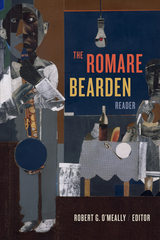 The Romare Bearden Reader
Robert G. O'Meally, editor
Duke University Press, 2019 The Romare Bearden Reader brings together a collection of new essays and canonical writings by novelists, poets, historians, critics, and playwrights. The contributors, who include Toni Morrison, Ralph Ellison, August Wilson, Farah Jasmine Griffin, and Kobena Mercer, contextualize Bearden's life and career within the history of modern art, examine the influence of jazz and literature on his work, trace his impact on twentieth-century African American culture, and outline his art's political dimensions. Others focus on specific pieces, such as A Black Odyssey, or the ways in which Bearden used collage to understand African American identity. The Reader also includes Bearden's most important writings, which grant readers insight into his aesthetic values and practices and share his desire to tell what it means to be black in America. Put simply, The Romare Bearden Reader is an indispensable volume on one of the giants of twentieth-century American art.
Contributors. Elizabeth Alexander, Romare Bearden, Mary Lee Corlett, Rachel DeLue, David C. Driskell, Brent Hayes Edwards, Ralph Ellison, Henri Ghent, Farah Jasmine Griffin, Harry Henderson, Kobena Mercer, Toni Morrison, Albert Murray, Robert G. O’Meally, Richard Powell, Richard Price, Sally Price, Myron Schwartzman, Robert Burns Stepto, Calvin Tomkins, John Edgar Wideman, August Wilson
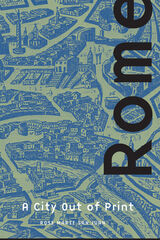 Rome: A City out of Print
Rose Marie San Juan
University of Minnesota Press, 2001 An intriguing look at what printed materials tell us about daily life and public space in seventeenth-century Rome.
Focusing on images and descriptions of movement and spectacle-everyday street activities, congregations in market piazzas, life in the Jewish ghetto and the plague hospital, papal and other ceremonial processions, public punishment, and pilgrimage routes-Rose Marie San Juan uncovers the social tensions and conflicts within seventeenth century Roman society that are both concealed within and prompted by mass-produced representations of the city. These depictions of Rome-guidebooks, street posters, broadsheets and brochures, topographic and thematic maps, city views, and collectible images of landmarks and other famous sights-redefined the ways in which public space was experienced, controlled, and utilized, encouraging tourists, pilgrims, and penitents while constraining the activities and movements of women, merchants, dissidents, and Jews.
San Juan contends that the representations of urban space afforded by new print technologies were appropriated by a wide variety of people in the city for purposes that ranged from regulation to opposition. A sophisticated analysis of the contested relations between people, print culture, and urban modernity, Rome: A City Out of Print also offers a rich portrait of the life of the street and the city.
Rose Marie San Juan is associate professor in the Department of Art History, Visual Art, and Theory at the University of British Columbia.
Rome and Byzantium in the Visigothic Kingdom: Beyond Imitatio Imperii
Damián Fernández
Amsterdam University Press, 2023 This volume interrogates the assumption that Visigothic practices and institutions were mere imitations of the Byzantine empire. Contributors rethink these practices not as uncritical and derivative adoptions of Byzantine customs, but as dynamic processes in dialogue with not only the Byzantine empire but also with the contemporary Iberian context, as well as the Roman past. The goal of the volume is to approach Visigothic customs not as an uncritical adoption and imitatio of contemporary Roman models (an "acculturation" model), but as unique interpretations of a common pool of symbols, practices, and institutions that formed the legacy of Rome. The contributors argue that it is necessary to reconsider the idea of imitatio imperii as a process that involved specific actors taking strategic decisions in historically contingent circumstances.
 Rome and the Arabs: A Prolegomenon to the Study of Byzantium and the Arabs
Irfan Shahîd
Harvard University Press The Arabs played an important role in Roman-controlled Oriens in the four centuries or so that elapsed from the Settlement of Pompey in 64 BC to the reign of Diocletian, AD 284–305. In Rome and the Arabs, Irfan Shahîd explores this extensive but poorly known role and traces the phases of the Arab-Roman relationship, especially in the climactic third century, which witnessed the rise of many powerful Roman Arabs such as the Empresses of the Severan Dynasty, Emperor Philip, and the two rulers of Palmyra, Odenathus and Zenobia. Philip the Arab, Shahîd argues, was the first Christian Roman emperor and Abgar the Great (ca. AD 200) was the first Near Eastern ruler to adopt Christianity. In addition to political and military matters, the author also discusses Arab cultural contributions, pointing out the role of the Hellenized and Romanized Arabs in the urbanization of the region and in the progress of Christianity, particularly in Edessa under the Arab Abgarids.
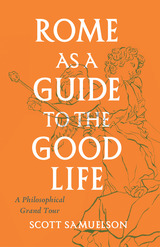 Rome as a Guide to the Good Life: A Philosophical Grand Tour
Scott Samuelson
University of Chicago Press, 2023 A unique, portable guidebook that sketches Rome’s great philosophical tradition while also providing an engaging travel companion to the city.
This is a guidebook to Rome for those interested in both la dolce vita and what the ancient Romans called the vita beata—the good life. Philosopher Scott Samuelson offers a thinker’s tour of the Eternal City, rooting ideas from this philosophical tradition within the geography of the city itself. As he introduces the city’s great works of art and its most famous sites—the Colosseum, the Forum, the Campo de’ Fiori—Samuelson also gets to the heart of the knotty ethical and emotional questions they pose. Practicing philosophy in place, Rome as a Guide to the Good Life tackles the profound questions that most tours of Rome only bracket. What does all this history tell us about who we are?
In addition to being a thoughtful philosophical companion, Samuelson is also a memorable tour guide, taking us on plenty of detours and pausing to linger over an afternoon Negroni, sample four classic Roman pastas, or explore the city’s best hidden gems. With Samuelson’s help, we understand why Rome has inspired philosophers such as Lucretius and Seneca, poets and artists such as Horace and Caravaggio, filmmakers like Fellini, and adventurers like Rosa Bathurst. This eclectic guidebook to Roman philosophy is for intrepid wanderers and armchair travelers alike—anyone who wants not just a change of scenery, but a change of soul.
 Rome from the Ground Up
James H. S. McGregor
Harvard University Press, 2006 Rome is not one city but many, each with its own history unfolding from a different center: now the trading port on the Tiber; now the Forum of antiquity; the Palatine of imperial power; the Lateran Church of Christian ascendancy; the Vatican; the Quirinal palace. Beginning with the very shaping of the ground on which Rome first rose, this book conjures all these cities, past and present, conducting the reader through time and space to the complex and shifting realities--architectural, historical, political, and social--that constitute Rome.
A multifaceted historical portrait, this richly illustrated work is as gritty as it is gorgeous, immersing readers in the practical world of each period. James McGregor's explorations afford the pleasures of a novel thick with characters and plot twists: amid the life struggles, hopes, and failures of countless generations, we see how things truly worked, then and now; we learn about the materials of which Rome was built; of the Tiber and its bridges; of roads, aqueducts, and sewers; and, always, of power, especially the power to shape the city and imprint it with a particular personality--like that of Nero or Trajan or Pope Sixtus V--or a particular institution.
McGregor traces the successive urban forms that rulers have imposed, from emperors and popes to national governments including Mussolini's. And, in archaeologists' and museums' presentation of Rome's past, he shows that the documenting of history itself is fraught with power and politics. In McGregor's own beautifully written account, the power and politics emerge clearly, manifest in the distinctive styles and structures, practical concerns and aesthetic interests that constitute the myriad Romes of our day and days past.
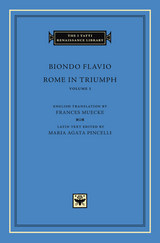 Rome in Triumph, Volume 1: Books I–II
Biondo Flavio
Harvard University Press, 2016 Biondo Flavio (1392–1463), humanist and historian, was a pioneering figure in the Renaissance discovery of antiquity; famously, he was the author who popularized the term “Middle Age” to describe the period between the fall of the Roman Empire and the revival of antiquity in his own time. While serving a number of Renaissance popes, he inaugurated an extraordinary program of research into the history, cultural life, and physical remains of the ancient world.
The capstone of this research program, Rome in Triumph (1459), has been said to bear comparison with the Encyclopédie of Diderot as the embodiment of the ideals of an age, seeking as it does to answer the overarching question of humanists from Petrarch to Machiavelli: what made Rome great? To answer the question Biondo undertakes a comprehensive reconstruction of Rome’s religion, government, military organization, customs and institutions over its thousand-year history. This volume contains the first edition of the Latin text since 1559 and the first translation into any modern language.
Rome Is Love Spelled Backward: Enjoying Art and Architecture in the Eternal City
Judith Testa
Northern Illinois University Press, 1998
A celebration of the art, architecture, and timeless human passion of the Eternal City, Rome Is Love Spelled Backward explores Rome's best-known treasures, often revealing secrets overlooked in conventional guidebooks. With the ancient play on "Roma" and "Amor"—ROMAMOR—Testa invites readers to experience the world's long love affair with one of its most beautiful cities.
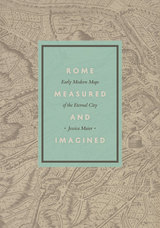 Rome Measured and Imagined: Early Modern Maps of the Eternal City
Jessica Maier
University of Chicago Press, 2015 At the turn of the fifteenth century, Rome was in the midst of a dramatic transformation from what the fourteenth-century poet Petrarch had termed a “crumbling city” populated by “broken ruins” into a prosperous Christian capital. Scholars, artists, architects, and engineers fascinated by Rome were spurred to develop new graphic modes for depicting the city—and the genre known as the city portrait exploded.
In Rome Measured and Imagined, Jessica Maier explores the history of this genre—which merged the accuracy of scientific endeavor with the imaginative aspects of art—during the rise of Renaissance print culture. Through an exploration of works dating from the fifteenth to the eighteenth centuries, her book interweaves the story of the city portrait with that of Rome itself.
Highly interdisciplinary and beautifully illustrated with nearly one hundred city portraits, Rome Measured and Imagined advances the scholarship on Renaissance Rome and print culture in fascinating ways.
 Rome: Pedestrians Beware
Rafael Alberti
Swan Isle Press, 2024 Rafael Alberti’s collection of poems set in vibrant Rome, his home in exile from Spain.
After his long exile in France and Argentina following the Spanish Civil War, Rafael Alberti’s final home in exile was Rome, where he wrote Roma: Peligro para caminantes (Rome: Pedestrians Beware). There, Romulus and Remus sneak down to the Tiber to suckle on feral cats, a jack of all trades pisses on the poet’s shoes, whistling as he walks away, and in the Campo de’ Fiori the poet compares sonnets with the wandering spirit of Giuseppe Gioachino Belli, all in the shadow of the glory of Rome’s imperial ruins.
Two suites of sonnets open and close the book, while in between, Alberti displays masterful poems in metered and free verse, rhyming couplets, and a numbered series of short poems. The blending of classical tradition with post-modern echoes the darkness and luminosity that exist within the poems, tinged with longing, nostalgia, love, as well as hope. In the end, the Eternal City is a refuge for Alberti:”I left for you all that I once held dear. / Oh Rome, my sorrow pleads, hold out your hands / and give me everything I left for you.”
This unique trilingual edition features exquisite and nuanced translations in English and Italian from the original Spanish by Anthony Geist and Giuseppe Leporace alongside visually evocative photographs of Rome by Adam Weintraub. Readers will want to take this poetic walk in Rome since what sometimes elicits caution, an aspect of danger, also becomes a destination for discovery.
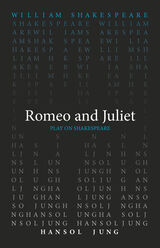 Romeo and Juliet
William Shakespeare
Arizona Center for Medieval and Renaissance Studies, 2022 Shakespeare’s famous play finds new life with a translation into contemporary American English.
“For never was a story of more woe / Than this of Juliet and her Romeo.” In this new version of Romeo and Juliet, written in accessible modern English, Hansol Jung breathes new life into Shakespeare’s famous tragedy. By closely examining the familiar language and focusing on the subtleties of the text, Jung illuminates a surprising and more nuanced world than many of us have come to expect from the well-known tale of star-crossed lovers.
This translation of Romeo and Juliet was written as part of the Oregon Shakespeare Festival’s Play On! project, which commissioned new translations of thirty-nine Shakespeare plays. These translations present work from “The Bard” in language accessible to modern audiences while never losing the beauty of Shakespeare’s verse. Enlisting the talents of a diverse group of contemporary playwrights, screenwriters, and dramaturges from diverse backgrounds, this project reenvisions Shakespeare for the twenty-first century. These volumes make these works available for the first time in print—a new First Folio for a new era.
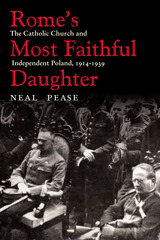 Rome’s Most Faithful Daughter: The Catholic Church and Independent Poland, 1914–1939
Neal Pease
Ohio University Press, 2009 When an independent Poland reappeared on the map of Europe after World War I, it was widely regarded as the most Catholic country on the continent, as “Rome’s Most Faithful Daughter.” All the same, the relations of the Second Polish Republic with the Church—both its representatives inside the country and the Holy See itself—proved far more difficult than expected. Based on original research in the libraries and depositories of four countries, including recently opened collections in the Vatican Secret Archives, Rome’s Most Faithful Daughter: The Catholic Church and Independent Poland, 1914–1939 presents the first scholarly history of the close but complex political relationship of Poland with the Catholic Church during the interwar period. Neal Pease addresses, for example, the centrality of Poland in the Vatican’s plans to convert the Soviet Union to Catholicism and the curious reluctance of each successive Polish government to play the role assigned to it. He also reveals the complicated story of the relations of Polish Catholicism with Jews, Freemasons, and other minorities within the country and what the response of Pope Pius XII to the Nazi German invasion of Poland in 1939 can tell us about his controversial policies during World War II. Both authoritative and lively, Rome’s Most Faithful Daughter shows that the tensions generated by the interplay of church and state in Polish public life exerted great influence not only on the history of Poland but also on the wider Catholic world in the era between the wars.
 Rome's Visceral Reactions: Politics and Poetics in Flesh and Blood
Caitlin Hines
University of Michigan Press, 2026 In ancient Rome, the Latin word viscera denoted the inner parts of the body, where physical sensations related to fear and anger could be felt and whose injury meant certain death. Viscera were also entangled with religious, political, and reproductive imagery: the word could refer to cuts of sacrificial meat, the inner workings of a governing body, a mother’s fertile womb, and the offspring she has carried. It appears in scientific descriptions of human anatomy, in elaborations of violent deaths, accusations of political conspiracy, and the laments of parents who must watch their children die. The sudden expansions of viscera into vivid metaphors for the body politic, the violated womb, and the desecrated sacrifice materialized in parallel with watershed moments in Roman history, reflecting urgent contemporary anxieties about politics, reproduction, and succession. Rome’s Visceral Reactions traces and interprets the semantic history of viscera, whose progressive acquisition of new meanings offers a compelling case for the dynamic interaction between body metaphor, semantic change, and political crisis at Rome.
Caitlin Hines follows the history of viscera from its earliest attestations through the end of the Julio-Claudian period and considers the works of Lucretius, Cicero, Vergil, Livy, Ovid, Seneca, and Lucan. Applying theories of embodied cognition and semantic change, Hines demonstrates how Roman authors influenced the development of their language through the invention, reception, and affirmation of innovative meanings and how pressing political and cultural crises could shape, and be shaped in return, by the sophisticated linguistic games of the Roman literary elite.
Romey's Order
Atsuro Riley
University of Chicago Press, 2010 Romey's Order is an indelible sequence of poems voiced by an invented (and inventive) boy-speaker called Romey, set alongside a river in the South Carolina lowcountry. As the word-furious eye and voice of these poems, Romey urgently records--and tries to order--the objects, inscape, injuries, and idiom of his "blood-home" and childhood world. Sounding out the nerves and nodes of language to transform "every burn-mark and blemish," to “bind our river-wrack and leavings," Romey seeks to forge finally (if even for a moment) a chord in which he might live. Intently visceral, aural, oral, Atsuro Riley's poems bristle with musical and imaginative pleasures, with story-telling and picture-making of a new and wholly unexpected kind.
Rommel: The End of a Legend
Ralf Georg Reuth
Haus Publishing, 2019 Erwin Rommel is the best-known German field commander of World War II. Repeatedly decorated for valor during the First World War, he would go on to lead the German Panzer divisions in France and North Africa. Even his British opponents admitted to admiring his apparent courage, chivalry and leadership, and he became known by the nickname “Desert Fox.” His death, in October 1944, would give rise to speculation for generations to come on how history should judge him. To many he remains the ideal soldier, but, as Reuth shows, Rommel remained loyal to his Führer until forced to commit suicide, and his fame was largely a creation of the master propagandist Joseph Goebbels. Stripping away the many layers of Nazi and Allied propaganda, Reuth argues that Rommel’s life symbolizes the complexity and conflict of the German tragedy: to have followed Hitler into the abyss, and to have considered that to be his duty.
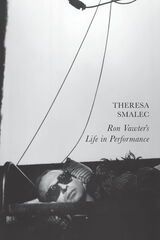 Ron Vawter's Life in Performance
Theresa Smalec
Seagull Books, 2018 From 1974 to 1994, Ron Vawter was a staple of New York’s downtown theater scene, first with the Performance Group and later as a founding member of the Wooster Group. Ron Vawter’s Life in Performance is the first book focused on this incomparable actor’s specific contributions to ensemble theater, while also covering his solo projects. Through a combination of archival research and oral testimony—including interviews with Willem Dafoe, Spalding Gray, Elizabeth LeCompte, Gregory Mehrten, Richard Schechner, and Marianne Weems—Vawter emerges as an unsung innovator whose metamorphosis from soldier to avant-garde star was hardly accidental. Theresa Smalec reconstructs Vawter’s years in amateur theater, his time in the National Guard, and his professional body of work.
Partly recuperative history, Ron Vawter’s Life in Performance explores the complex intersections of individual and group biography. It also offers a unique perspective on an era that spanned from the Vietnam War to the AIDS crisis, putting Vawter’s own activism at the forefront. This volume’s broad historical and cultural reach, coupled with its careful study of a beloved yet enigmatic performer, will make it a tremendous resource for theater scholars and practitioners.
Ronald Harwood's Tragic Vision: A Critical Analysis of His Novels, Plays, and Screenplays
Ann C. Hall
University of Iowa Press, 2024 “Art has a lot to answer for.” So says Sarah Bernhardt in Ronald Harwood’s play After the Lions. Harwood’s own career can be summarized by that same quote as well.
Ronald Harwood’s Tragic Vision offers the first critical analysis of prolific and award-winning British author Ronald Harwood (1934–2020). Though he received an Oscar for The Pianist, a knighthood, and numerous other awards and nominations, Harwood worked as a ghostwriter, script doctor, and veritable unknown for many years. As he became successful, many critics still misread his works and positioned him as a less-fashionable counterpart to his lifelong friend Harold Pinter. This study proposes a conceptual framework to approach his, and others’, work based on the genre of tragedy, offering a greater appreciation for and understanding of the Harwood canon.
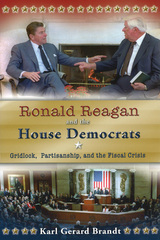 Ronald Reagan and the House Democrats: Gridlock, Partisanship, and the Fiscal Crisis
Karl Gerard Brandt
University of Missouri Press, 2009
When Democrats in the House of Representatives locked horns with President Ronald Reagan over the latter’s fiscal policies, the ensuing conflict reinforced the seismic shift in the political landscape that the 1980 election had brought. Karl Brandt now tells the story of how the New Deal Democratic coalition was able to sustain itself in the face of an unprecedented Republican assault—in a conflict whose reverberations are still being felt today.
After a bipartisan conservative House coalition passed Reagan’s budget and tax cuts in 1981, conservative Democrats became worried about the increasingly large deficits produced by Reaganomics and questioned the administration’s spending priorities. In one of the few studies of congressional politics in the 1980s, Brandt describes the House Democratic leadership’s efforts to rebuild party unity while facing challenges from conservative Democrats, the Reagan administration, and the emerging fiscal crisis. He tells how Democrats worked hard to rein in party conservatives, to craft consensus-oriented policies palatable to all Democrats, and over the coming years to force the president and the Senate to compromise over fiscal policy.
Drawing on primary source materials unavailable in the 1980s—including transcripts from closed-door meetings and internal House documents—Brandt chronicles the events that resulted in the deepening of the fiscal crisis, examines the growth of an intensely partisan political environment, and provides insight into the dynamics of creating a national budget. He cuts through conservative rhetoric to show how Reagan’s fiscal policies deepened federal deficits and reveals how the partisan struggles of the Reagan years redefined the Democrats along more centrist lines.
When the dust had settled, the Democratic Party had become more unified in the face of budget conflict and had proved that it could practice fiscal conservatism and make tough budget choices when necessary. Carefully argued and thoroughly researched, Brandt’s work brings historical perspective to this important chapter in recent history as it explores conflicting visions of the economy, American society, and the very future of the nation.
Ronald Reagan: The Politics of Symbolism
Robert Dallek
Harvard University Press, 1984 Few American politicians have enjoyed greater popularity than Ronald Reagan. Humor, charm, good looks, an intuitive feel for national concerns, and an extraordinary ability to speak persuasively to millions of people were major assets. But his fundamental appeal went deeper: a blend of Catholic and Protestant, small-town boy and famous entertainer, Horatio Alger and P. T. Barnum, traditional moralist and media celebrity, Reagan spoke for old values in current accents.
Robert Dallek presents a sharply drawn, richly detailed portrait of the man and his politics--from his childhood years through the California governorship to the first years of the presidency. It is an essential guide for all observers of the presidential election of 2000, and a starting point for anyone wanting to discover what the Reagan experience really meant.
Ronald Reagan: The Politics of Symbolism, With a New Preface
Robert Dallek
Harvard University Press, 1999 Few American politicians have enjoyed greater popularity than Ronald Reagan. Humor, charm, good looks, an intuitive feel for national concerns, and an extraordinary ability to speak persuasively to millions of people were major assets. But his fundamental appeal went deeper: a blend of Catholic and Protestant, small-town boy and famous entertainer, Horatio Alger and P. T. Barnum, traditional moralist and media celebrity, Reagan spoke for old values in current accents.
Robert Dallek presents a sharply drawn, richly detailed portrait of the man and his politics--from his childhood years through the California governorship to the first years of the presidency. It is an essential guide for all observers of the presidential election of 2000, and a starting point for anyone wanting to discover what the Reagan experience really meant.
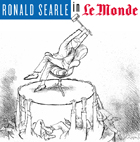 Ronald Searle in Le Monde
Ronald Searle
University of Chicago Press, 2002 Ronald Searle, a master of modern caricature, has tremendously influenced the work of other artists. His biting, darkly satirical wit and unique graphic style have also earned him admirers from far and wide; Groucho Marx called him a genius, and John Lennon named him as one of two people (along with Lewis Carroll) who most affected his life.
Since 1995, Searle has plied his sardonic trade on the coveted op-ed pages of the French daily newspaper Le Monde. This book presents more than a hundred of the best of these cartoons, ranging across politics, the new Europe, the nature of the contemporary economy, social games, and various "angels," both benign and mischievous. Whether skewering the greed of the rich with images of men in suits padding each other's pockets with cash or conducting business under the table, or making a poignant comment about how much harder peace has to work than war to stay in the same place, Searle displays the same pungent, incisive, yet infinitely humane wit. The deceptive simplicity of his lines and shadings combine with meticulously observed details of dress, background, and facial expression to produce arresting images that convey his messages powerfully and beautifully.
By turns delightful, amusing, and disturbing, but always deeply thought provoking, Searle's work reaches well beyond the specific occasion that inspired a given cartoon to illuminate key aspects of public life in the West at the end of the millennium. This book contains twenty-five illustrations not found in the French edition, together with a new preface for English-speaking readers written by Searle himself.
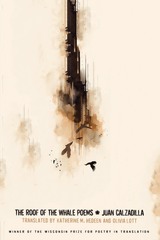 The Roof of the Whale Poems
Juan Calzadilla, Translated by Katherine M. Hedeen and Olivia Lott
University of Wisconsin Press, 2023 Venezuelan poet Juan Calzadilla (b. 1931), past recipient of the National Prize in the Visual Arts and the National Prize in Literature, is considered one of the most influential poets of the Spanish language. But while his books have appeared in Argentina, Brazil, Colombia, Cuba, and Spain, his work has not been widely available in English until now.
In 1961 Calzadilla was a founding member of El Techo de la Ballena (The Roof of the Whale), an avant-garde collective that sought to fuse politics and aesthetics. He published three books of poetry under its umbrella—Dictated by the Pack (1962), Bad Manners (1965), and The SupernaturalContradictions (1967)—which are all presented here in an omnibus edition, masterfully translated by Katherine M. Hedeen and Olivia Lott. Decades later, these poems still resonate, profoundly illustrating a sense of entrapment, of societal pressures on the individual, and of steadfast refusal to give in. Suffused with surrealist imagery, exuberant, exciting, and unexpected, The Roof of the Whale Poems is a breathtaking collection.
|
|

